

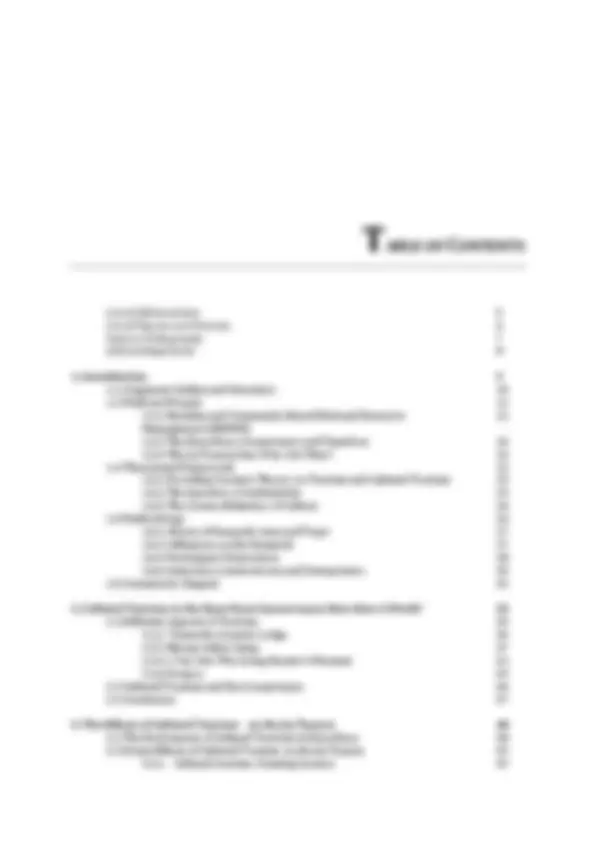
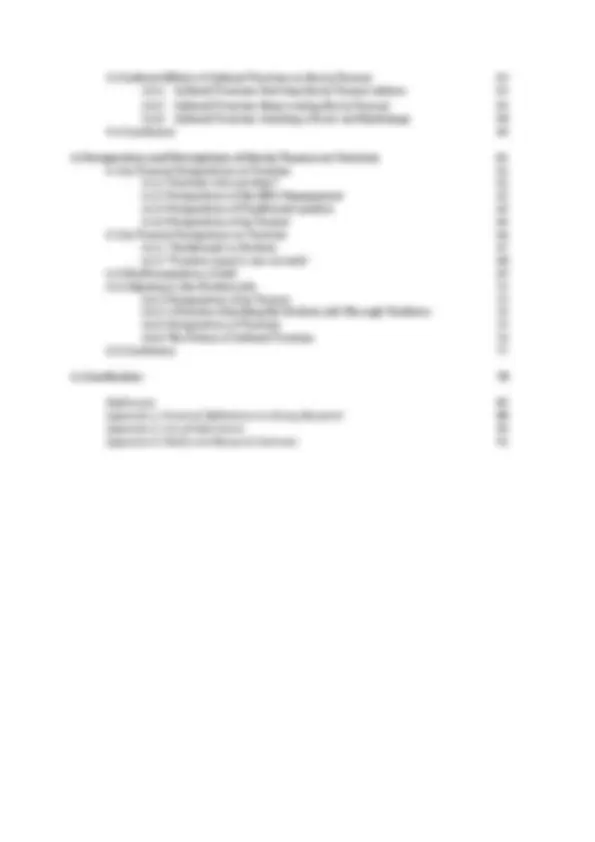

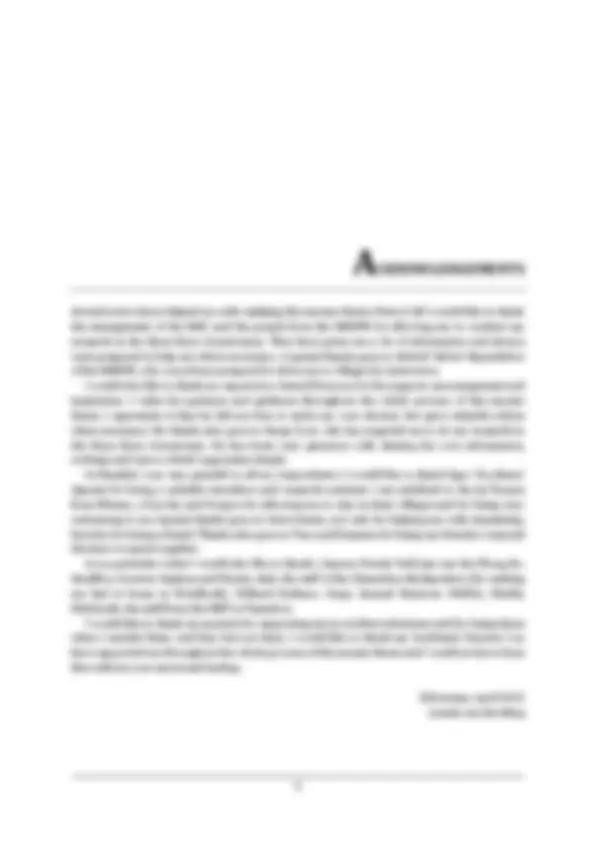
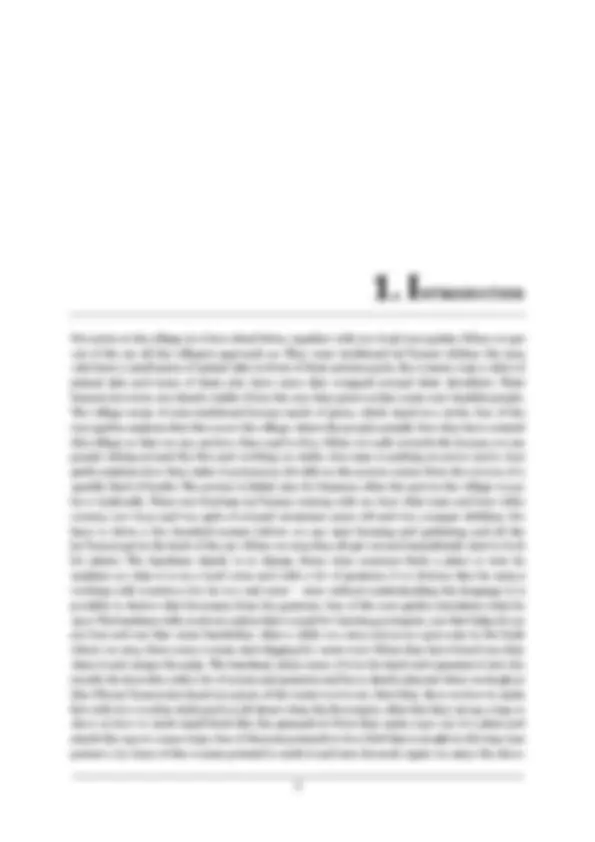
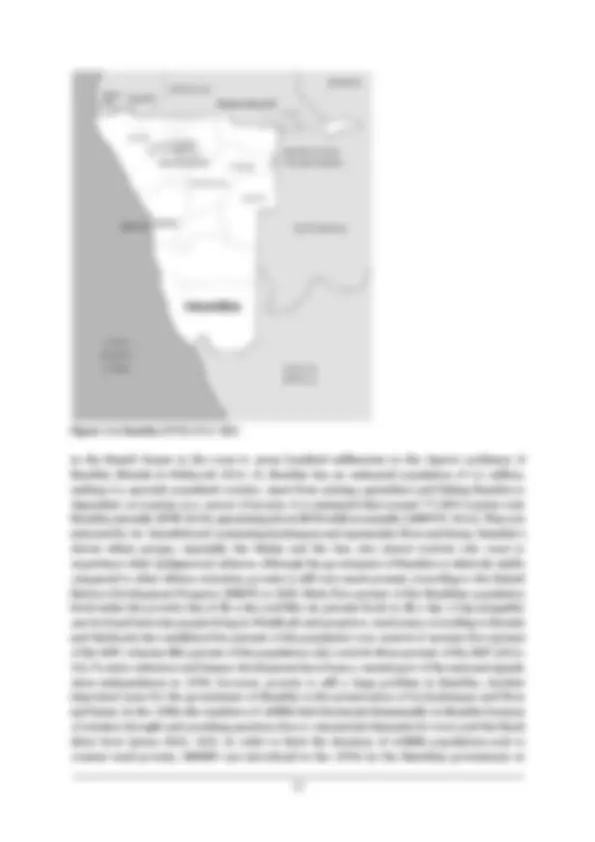
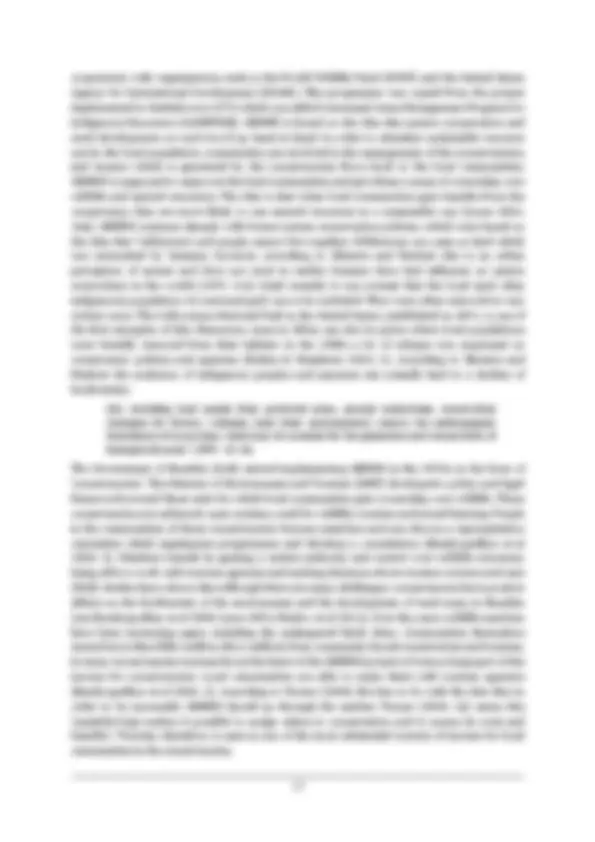
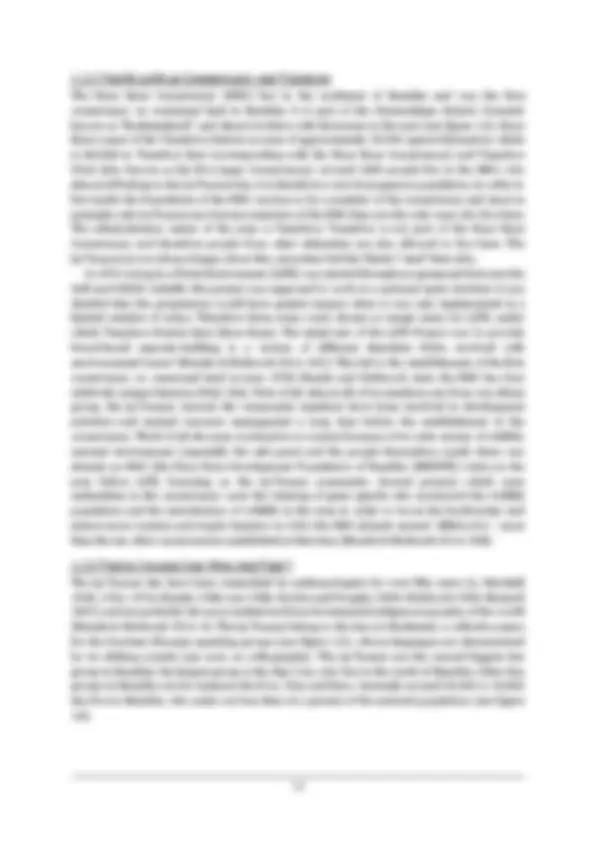
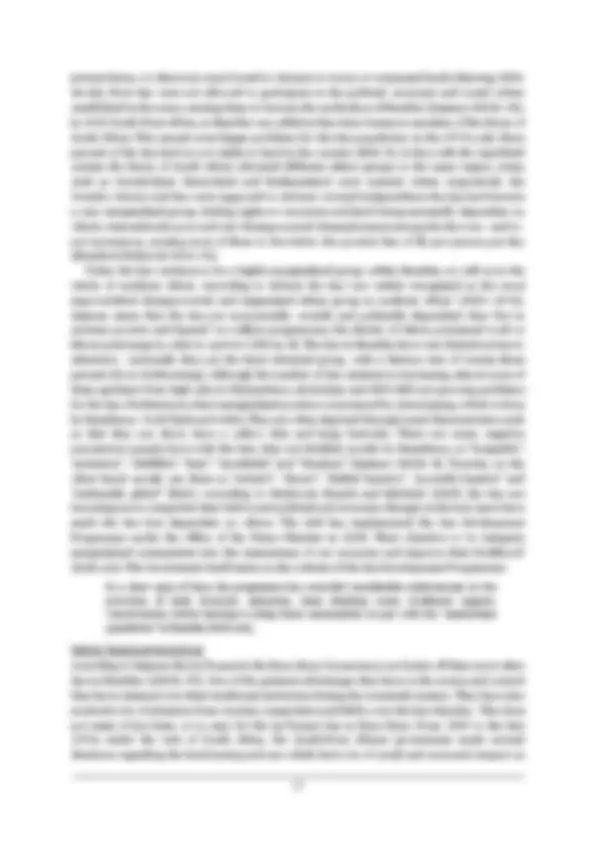
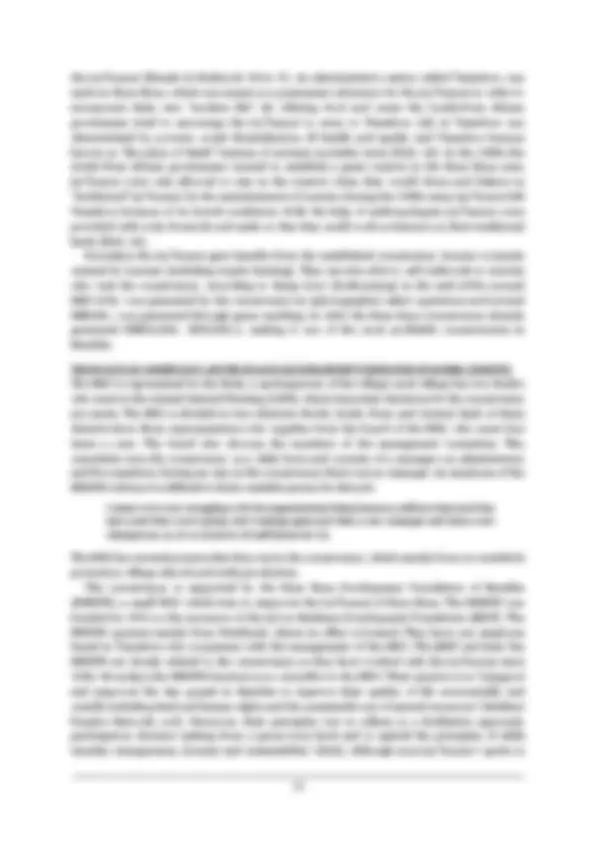
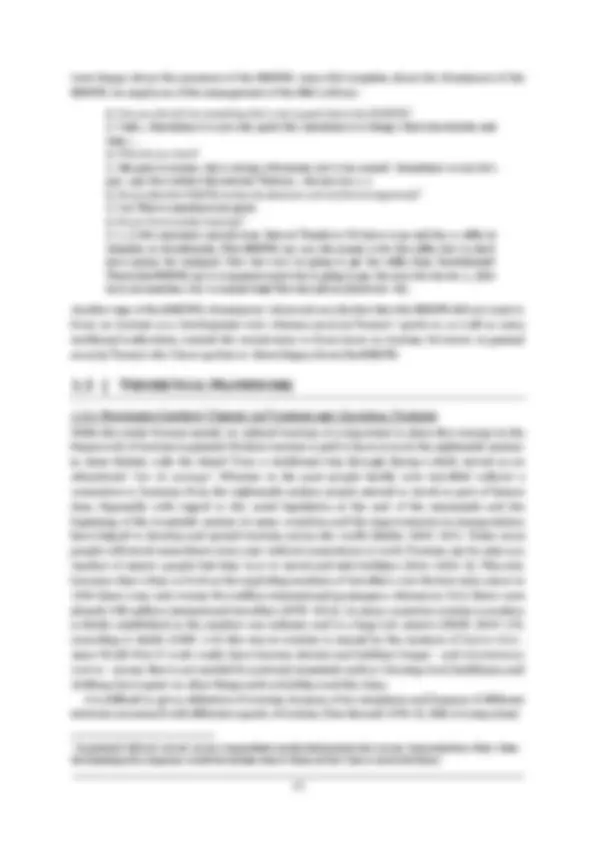
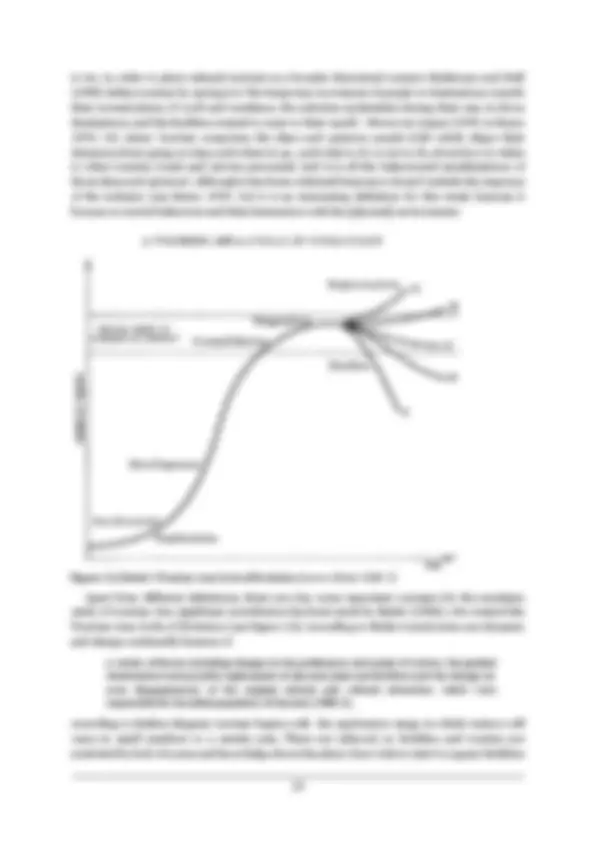
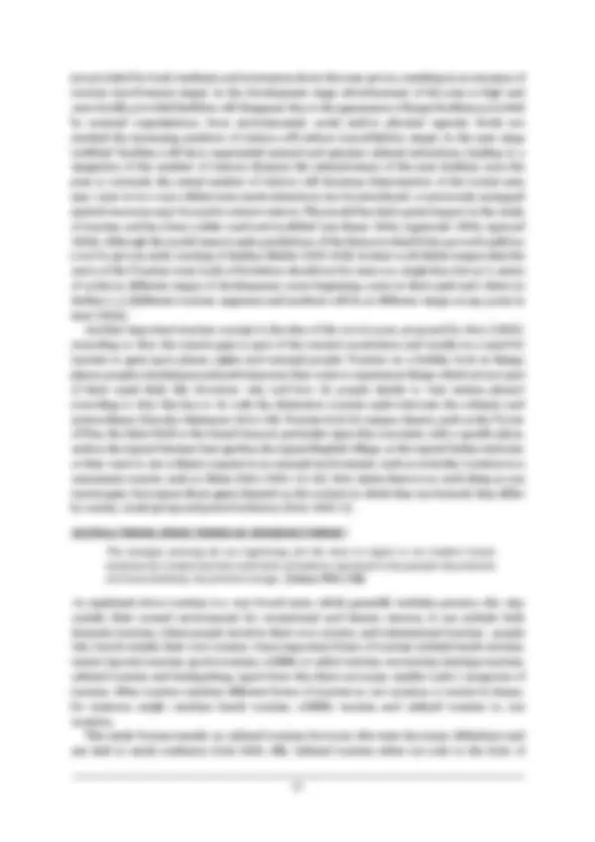
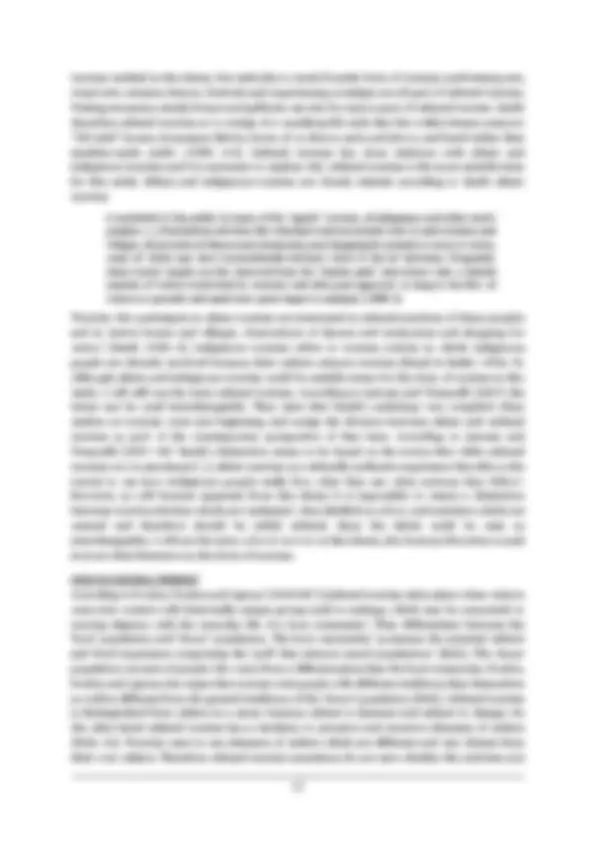

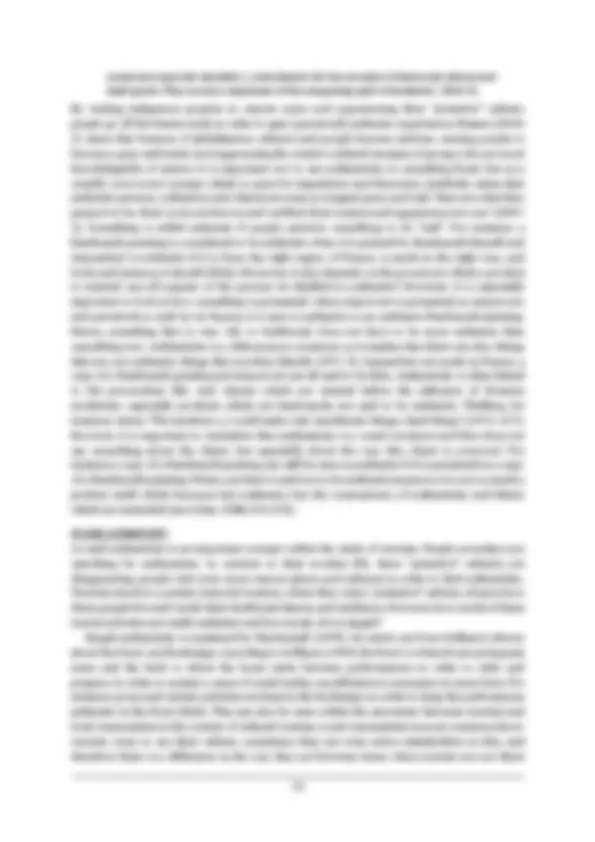
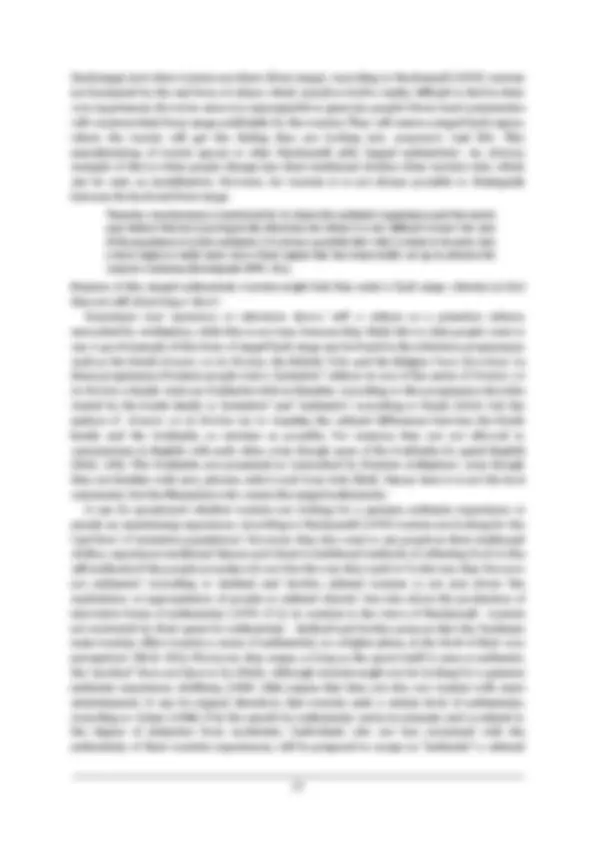
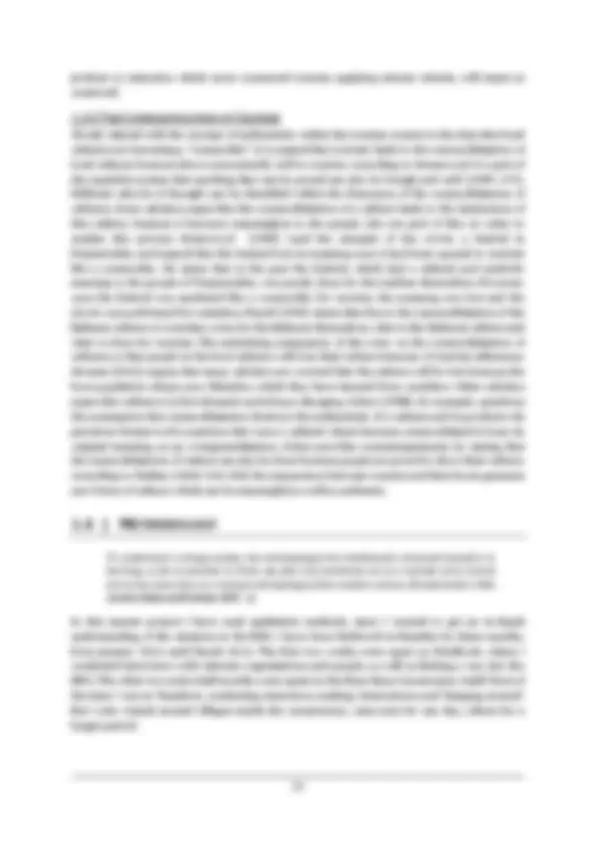
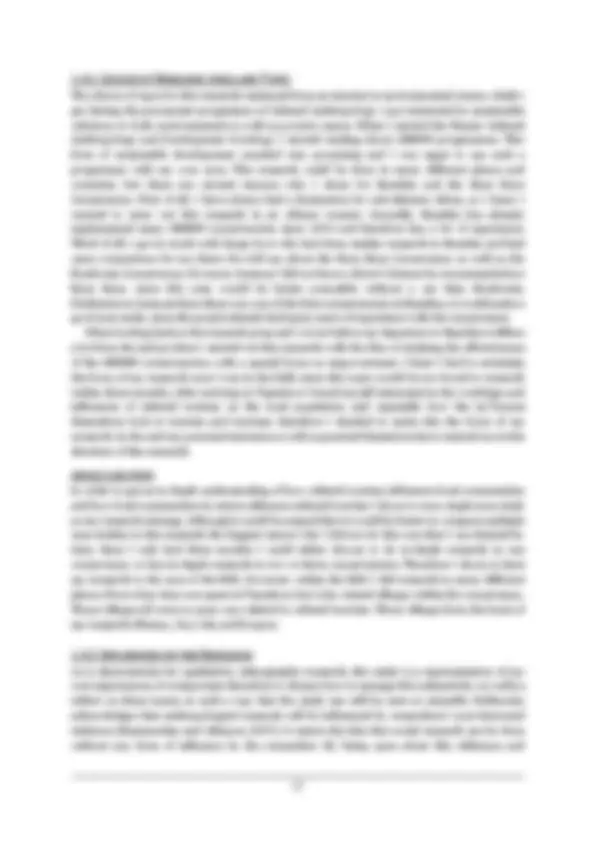
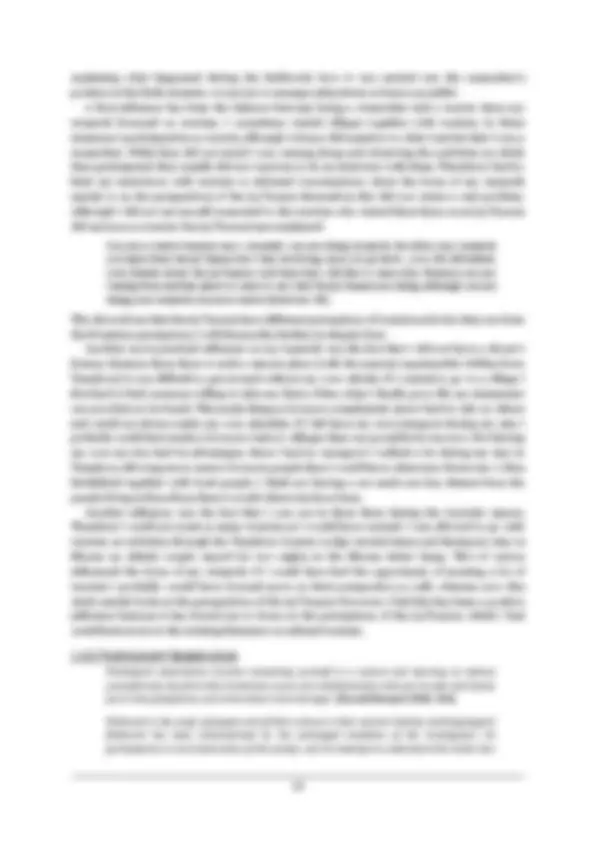
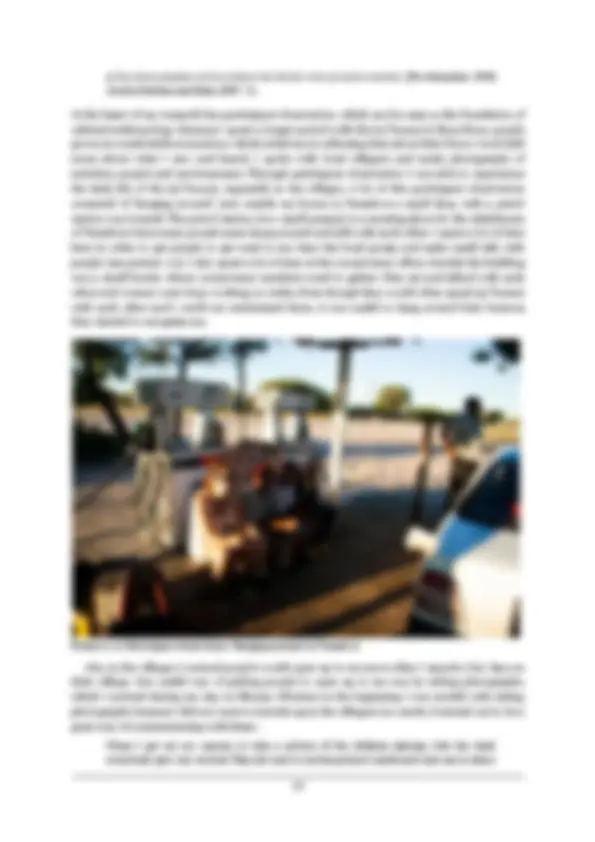
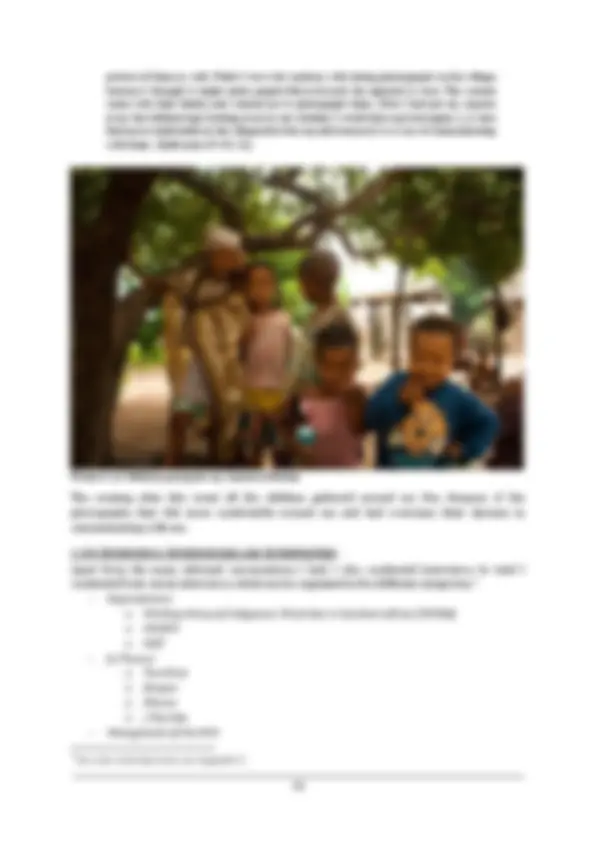
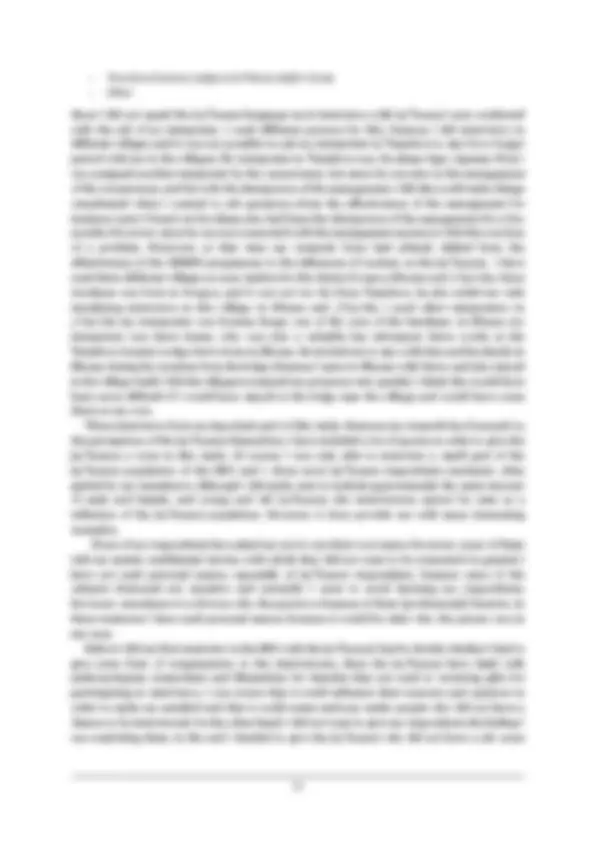
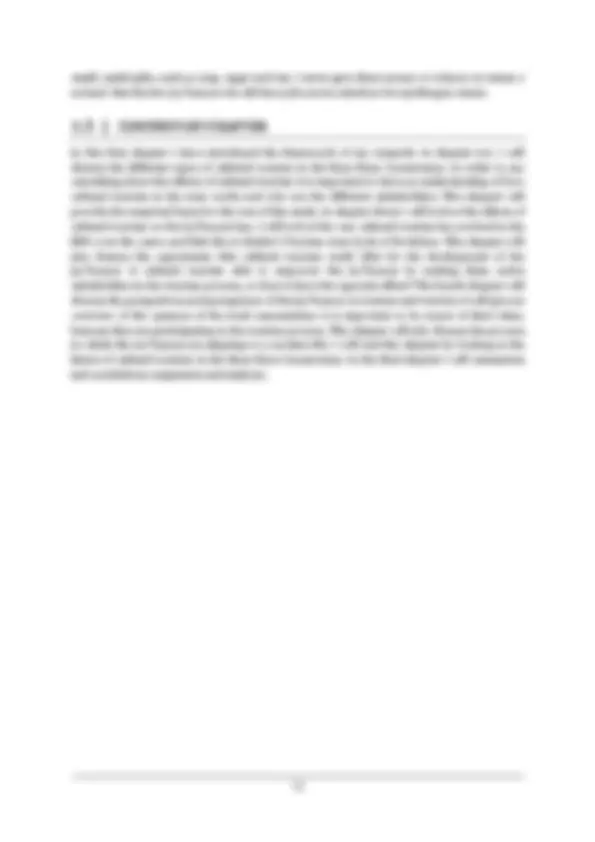
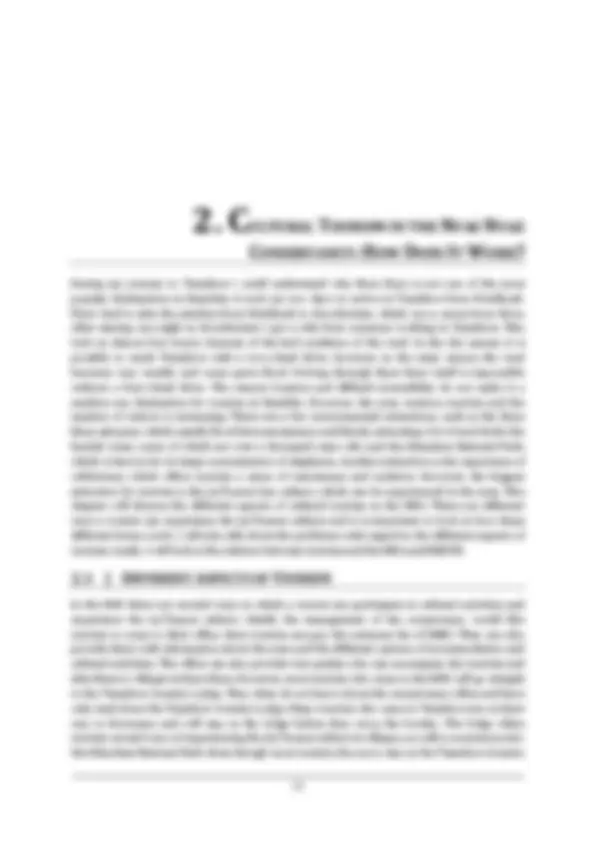
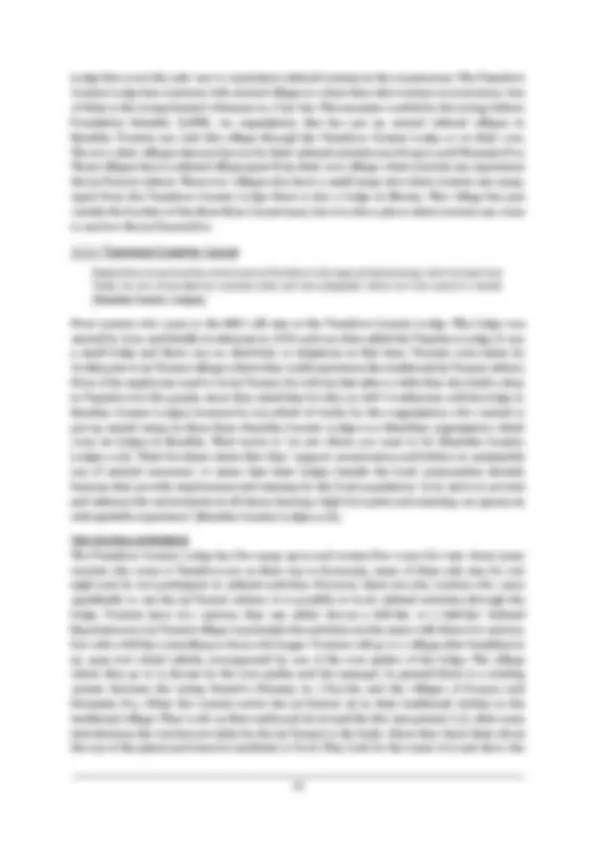
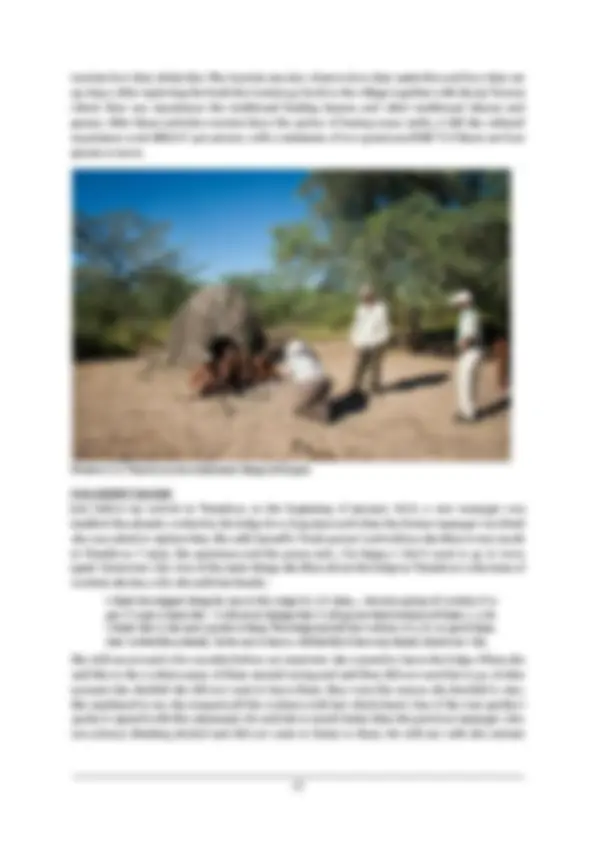
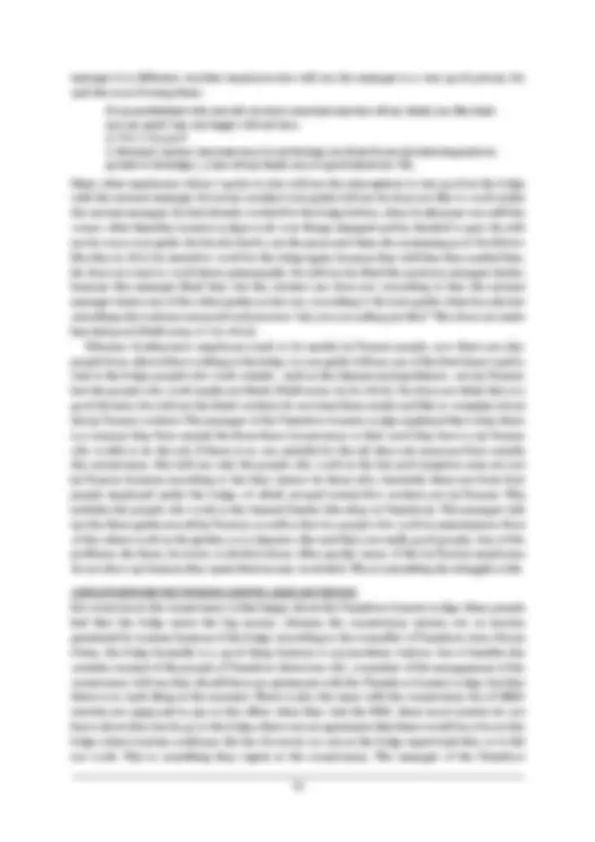
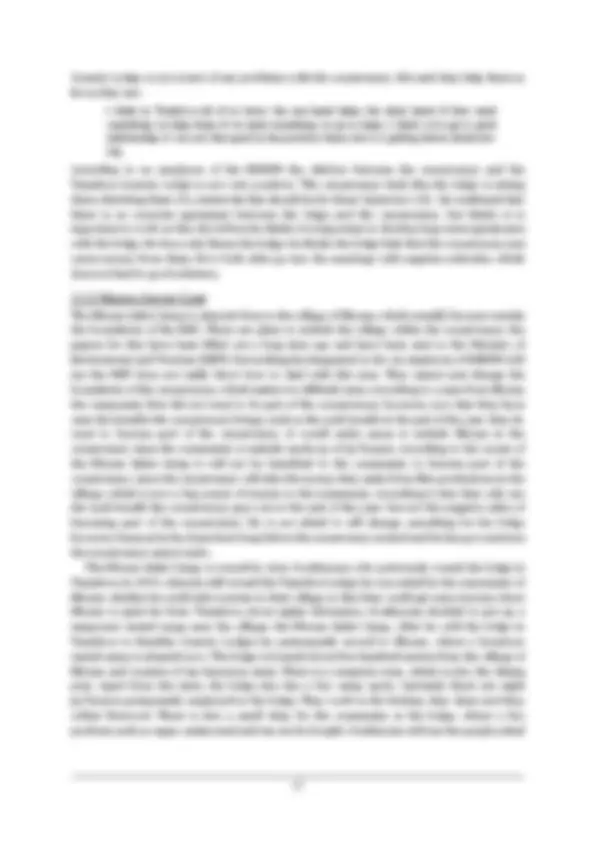
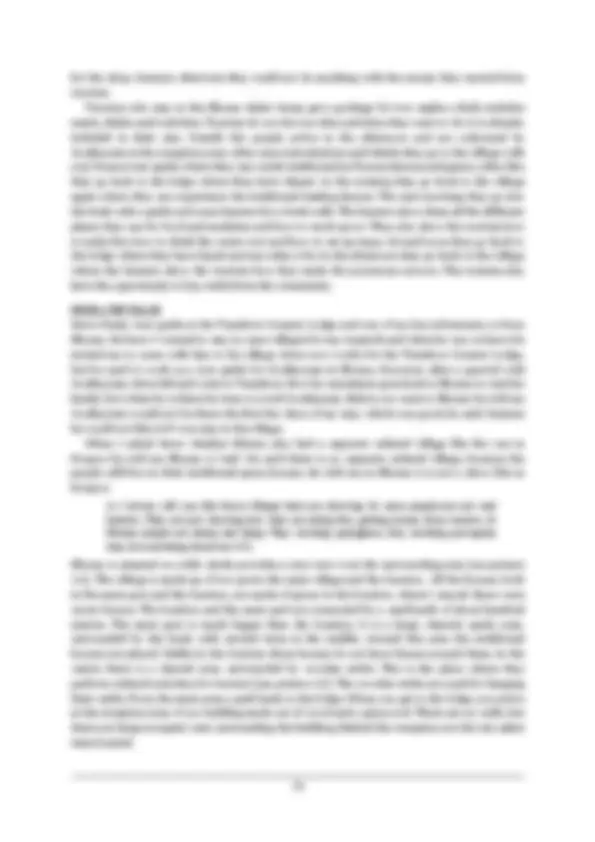
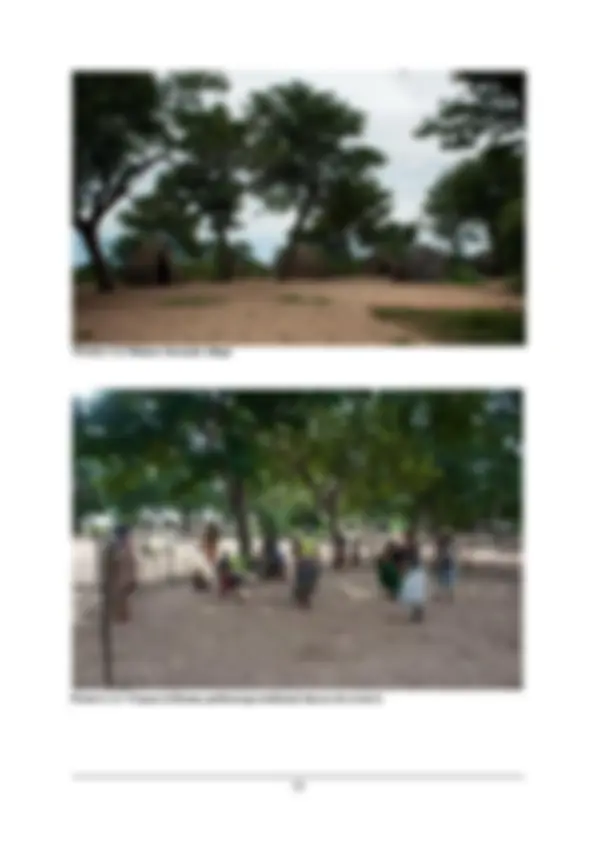
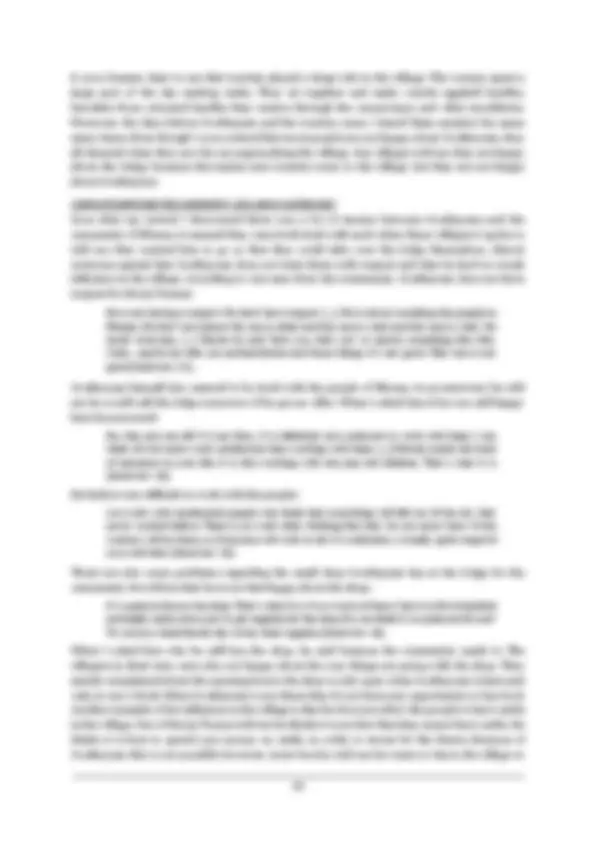
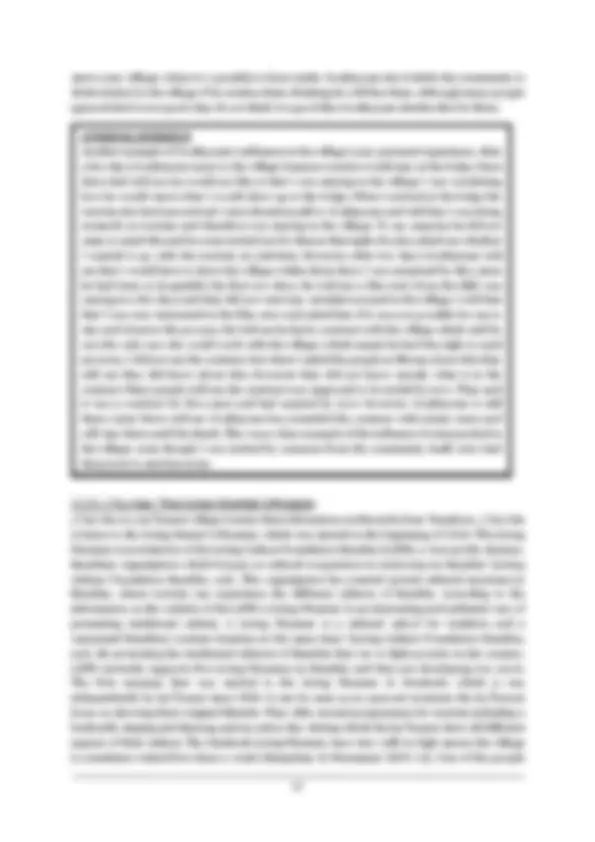
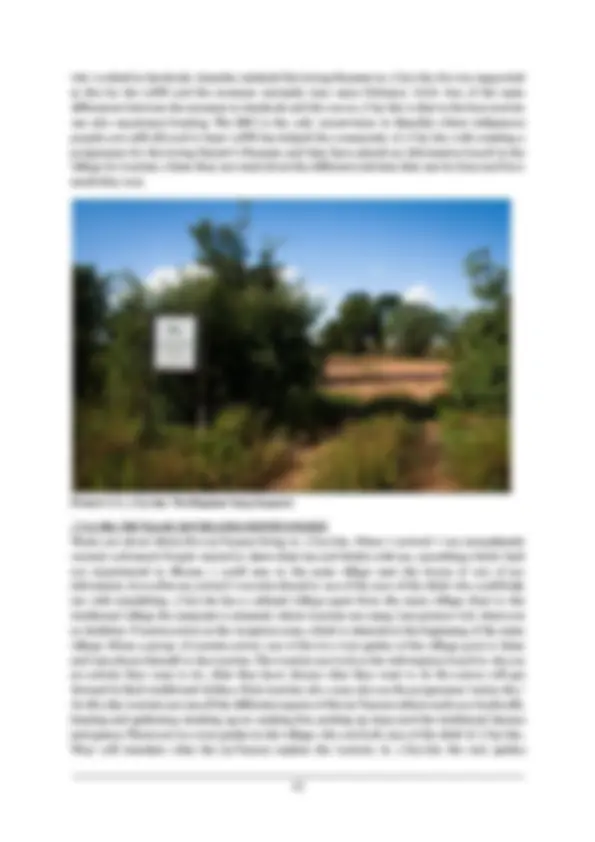
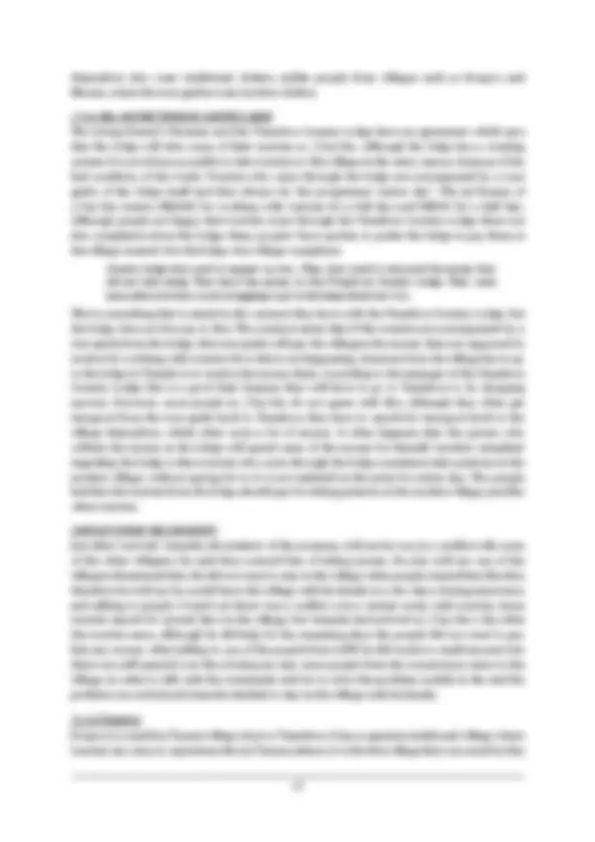
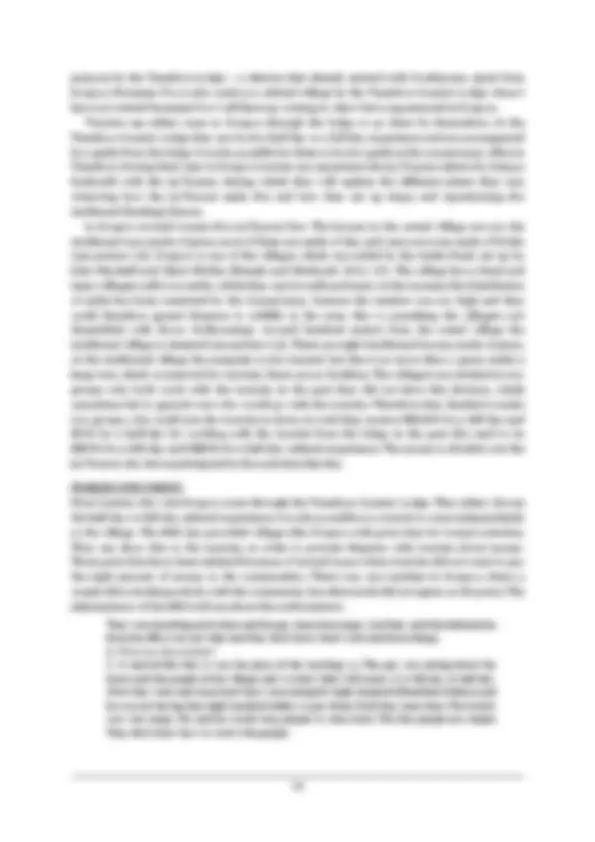
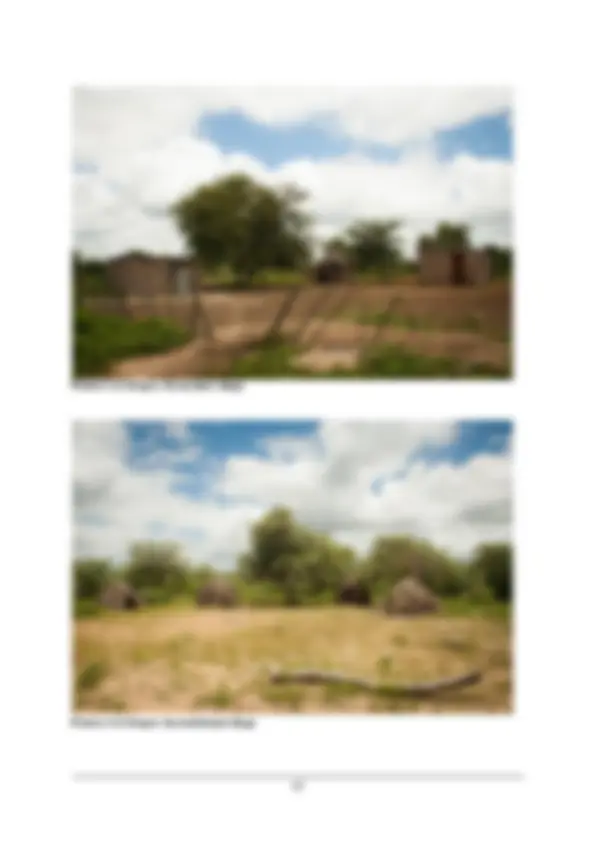
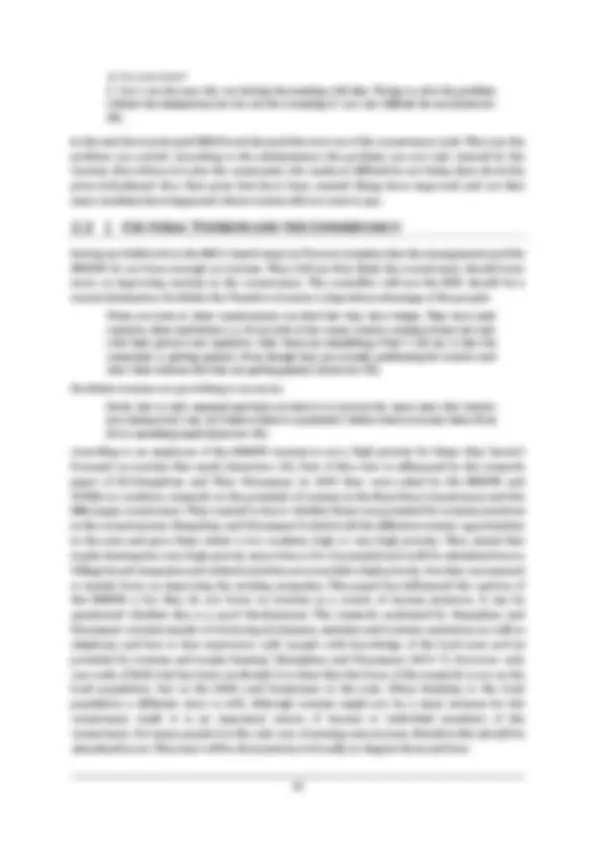
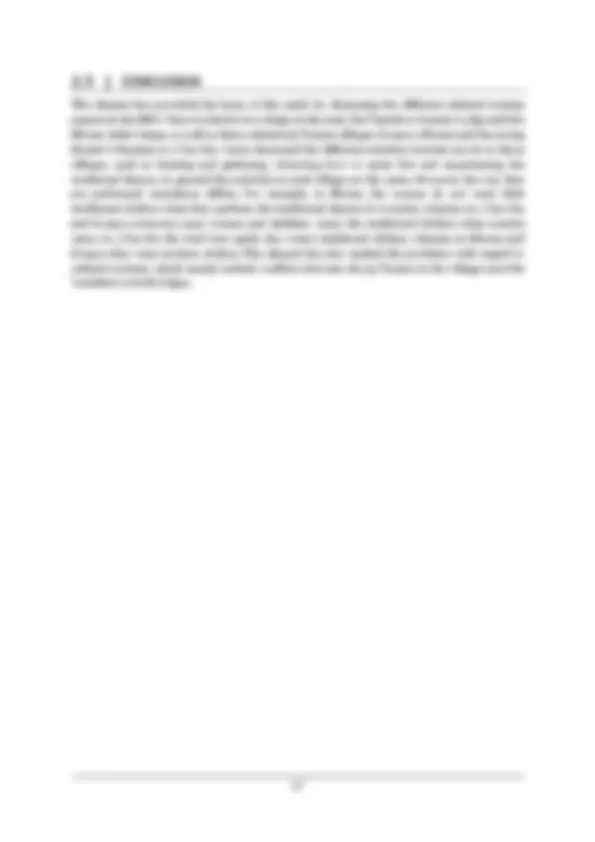
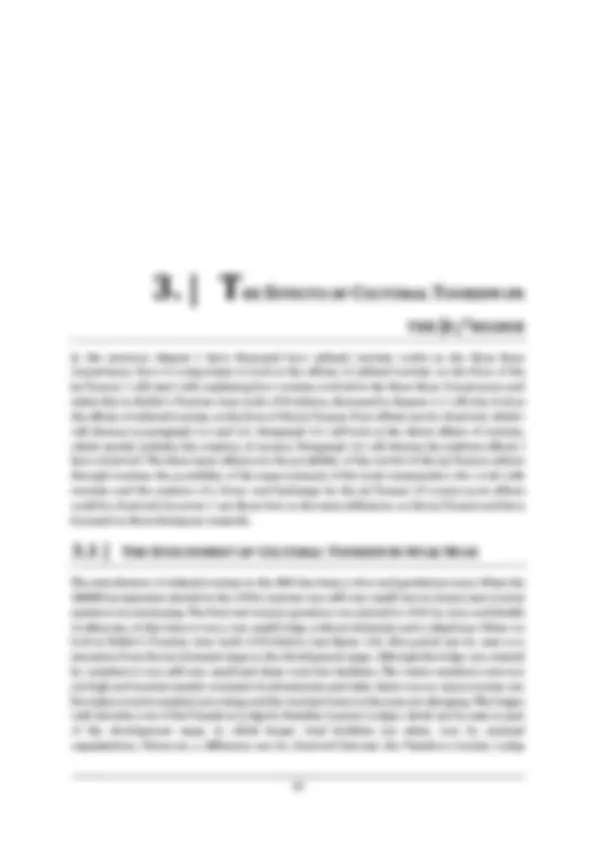
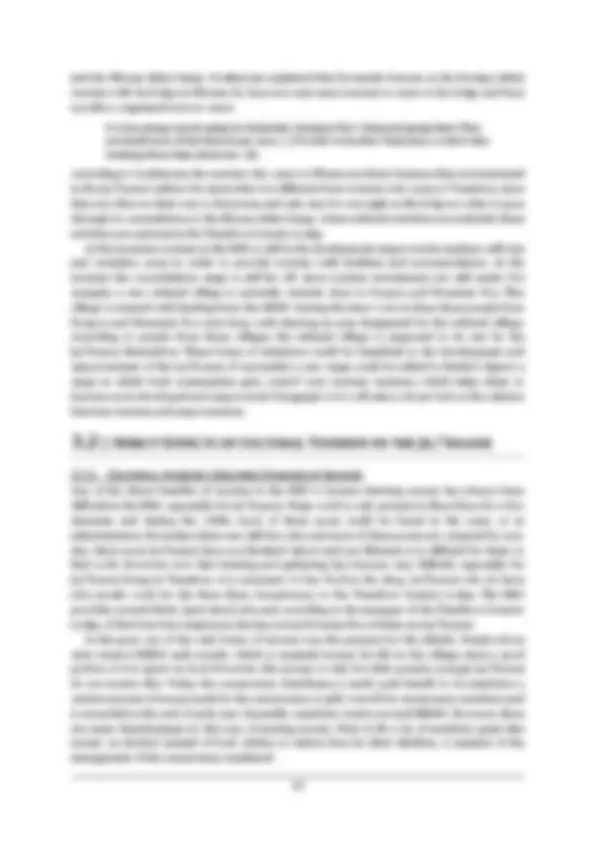
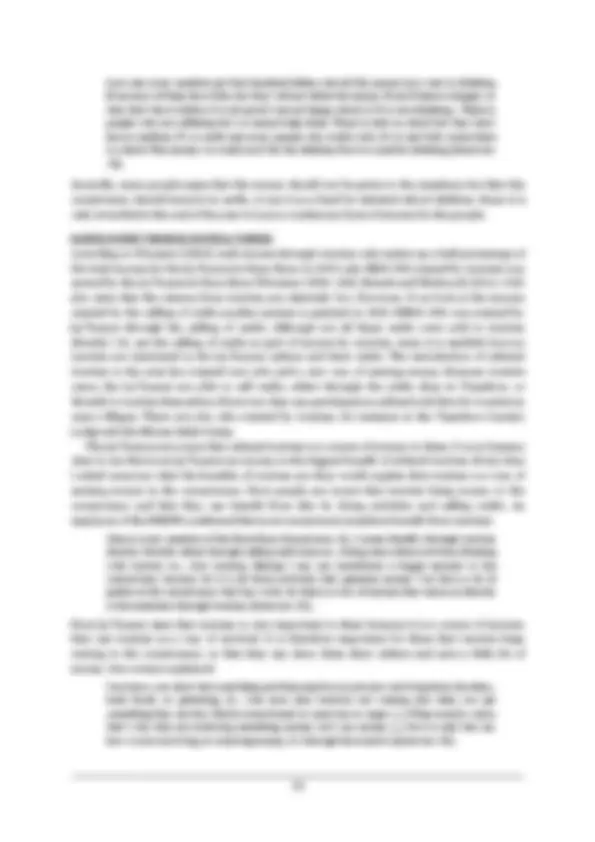
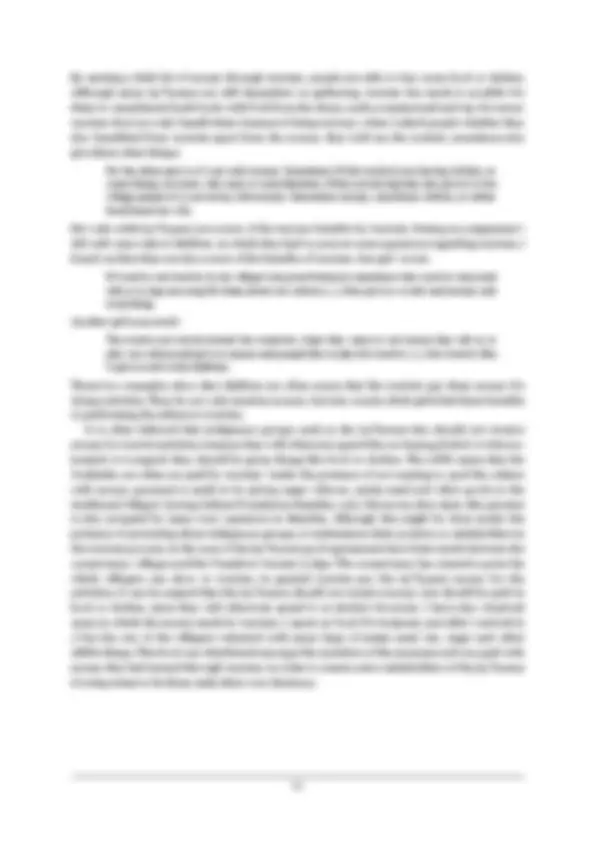
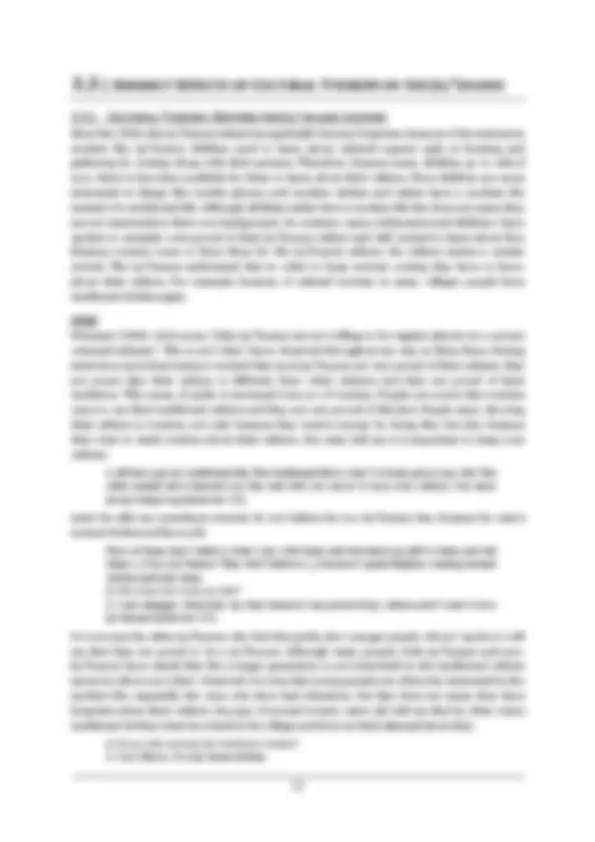
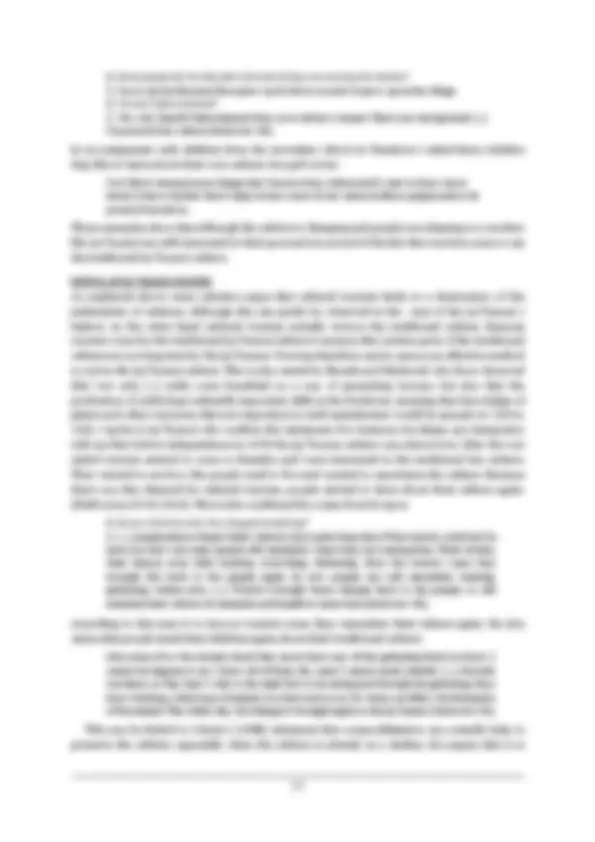
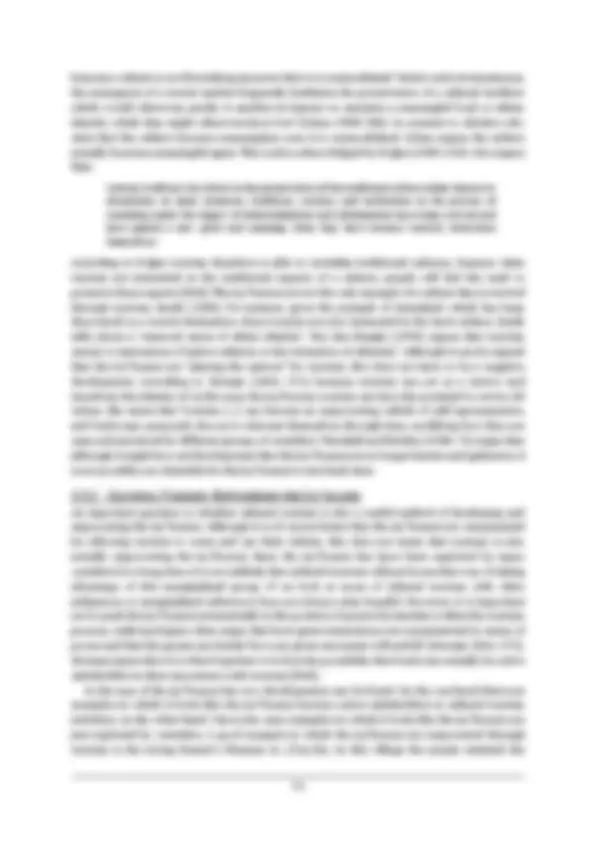
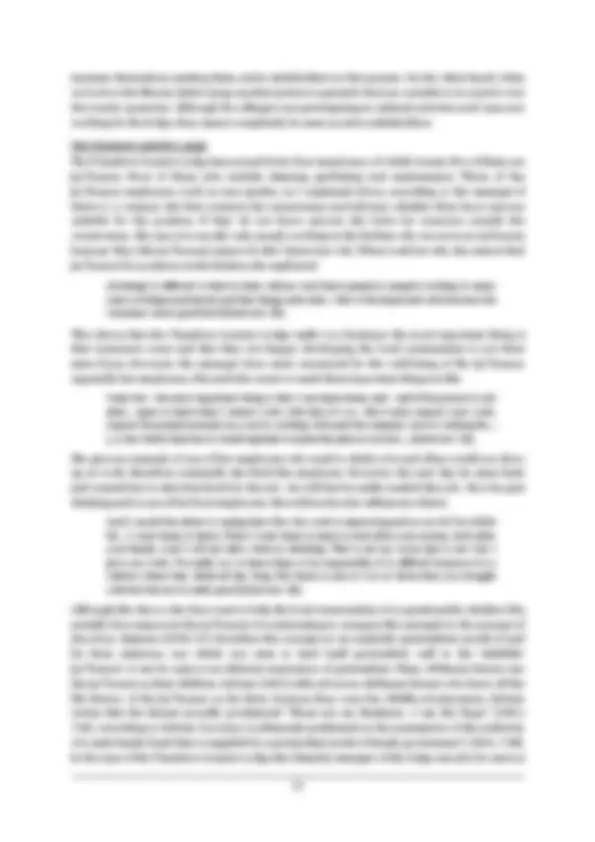
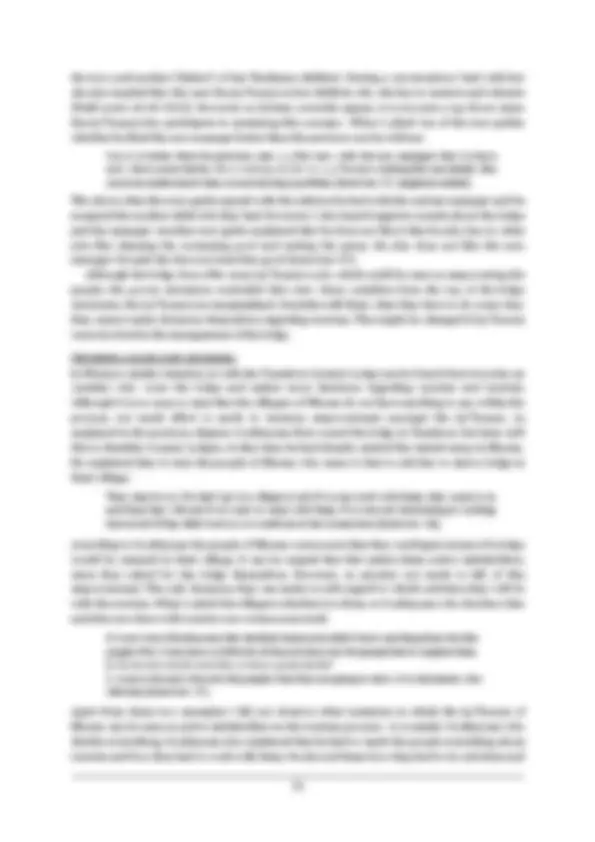
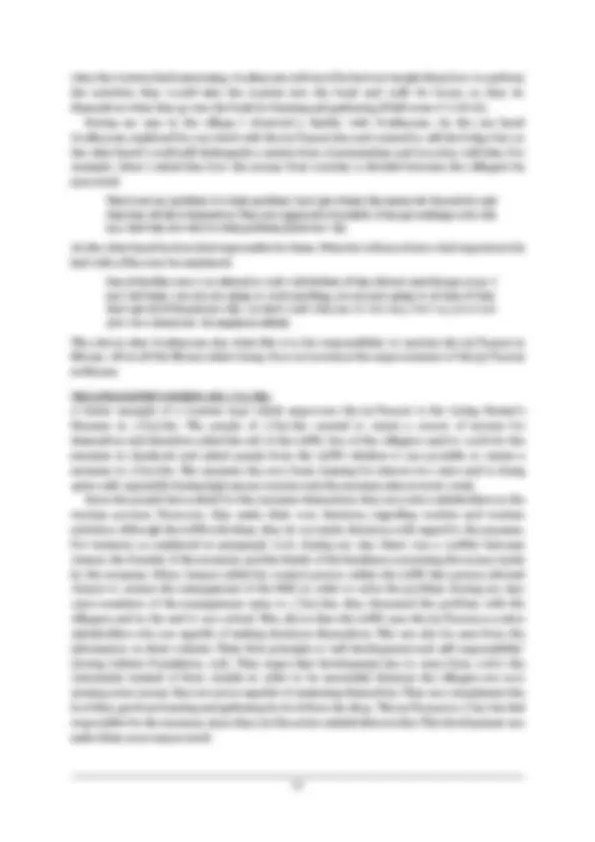
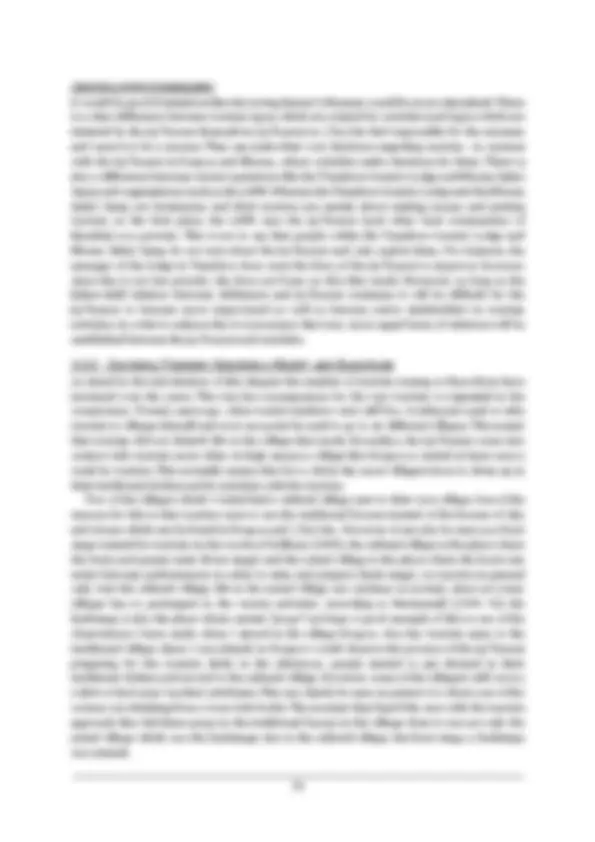
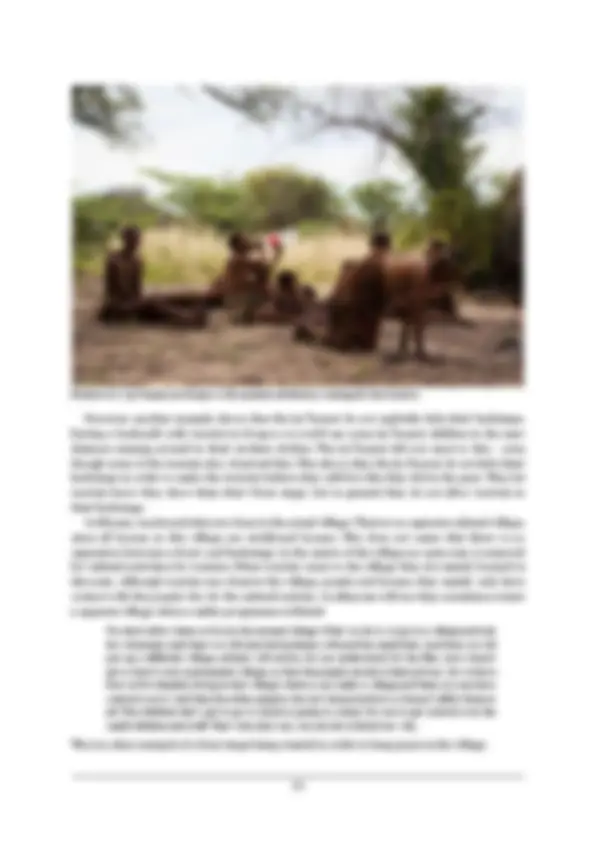
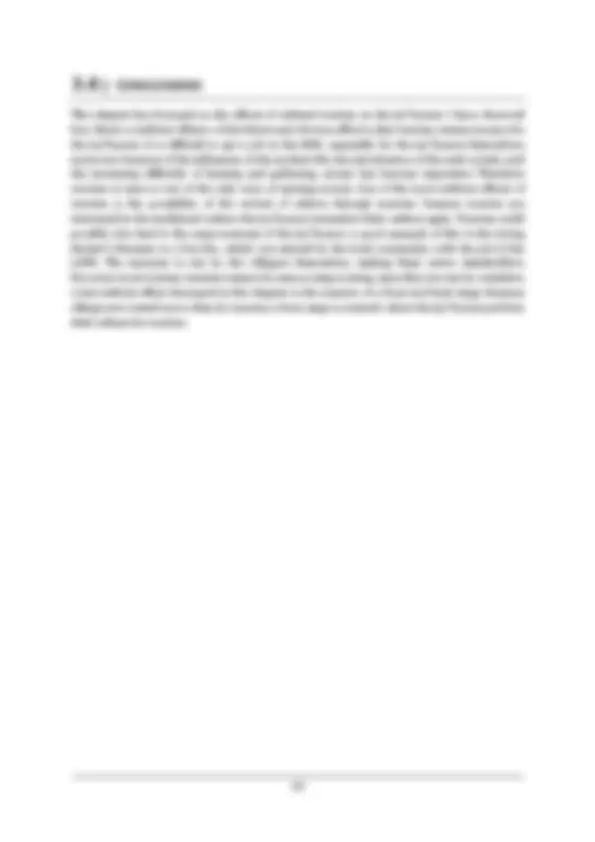
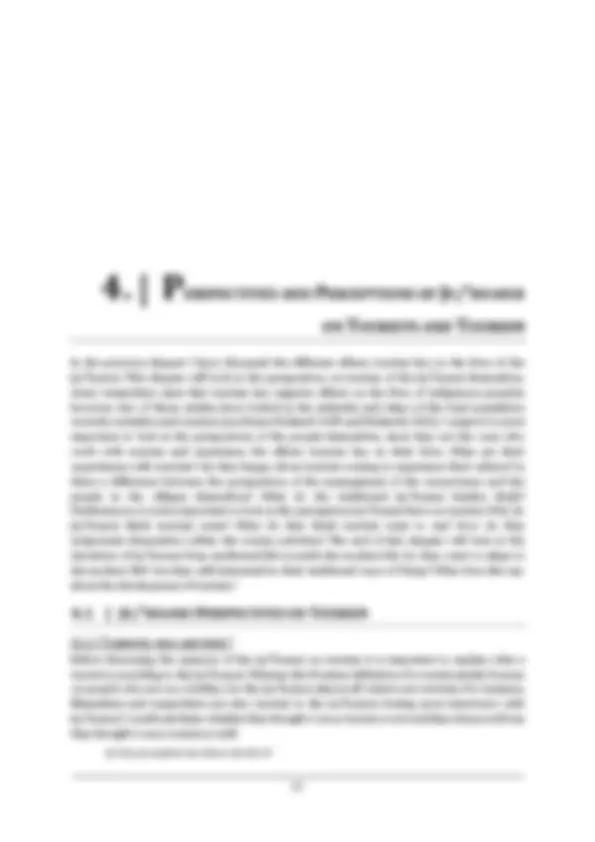
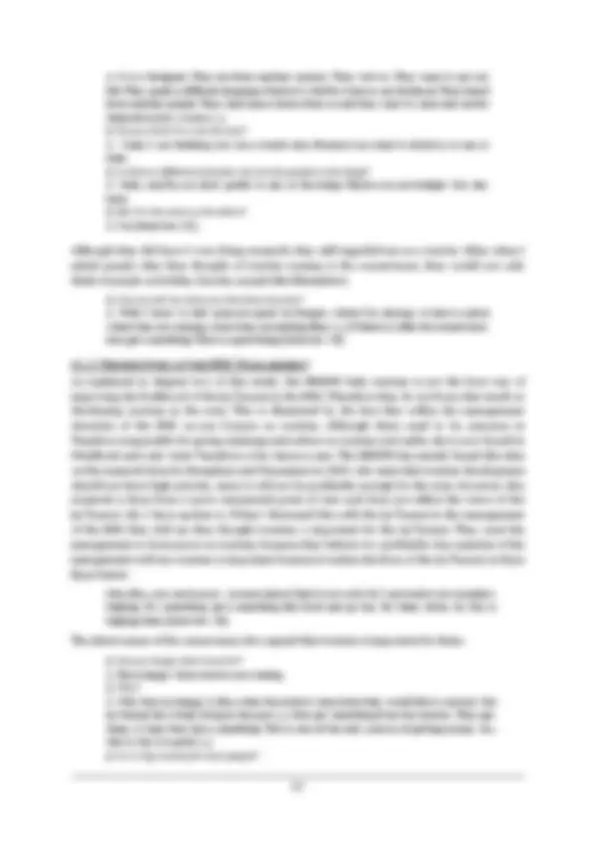
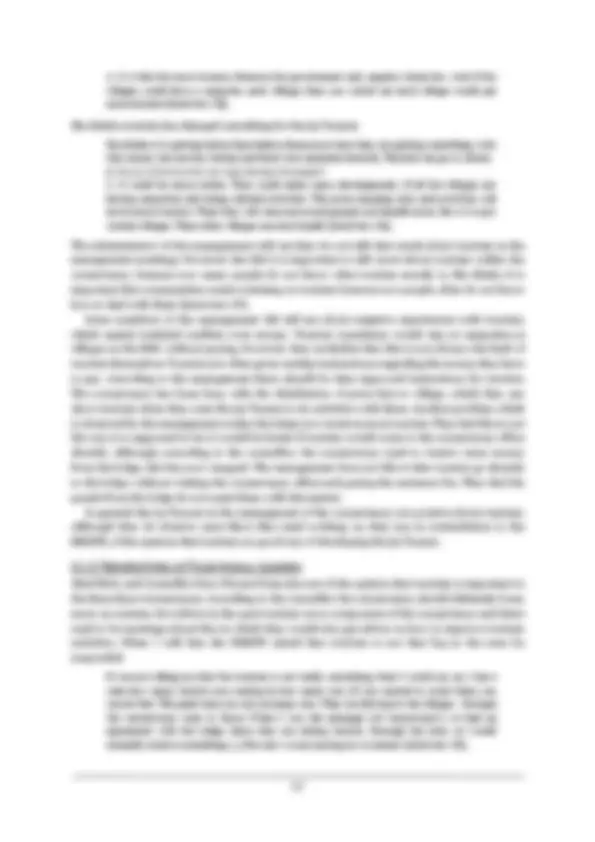
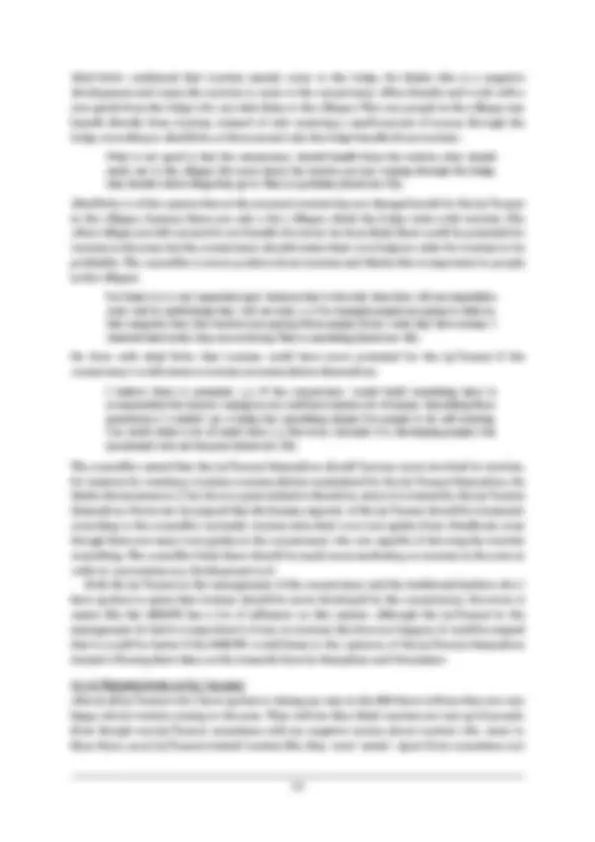
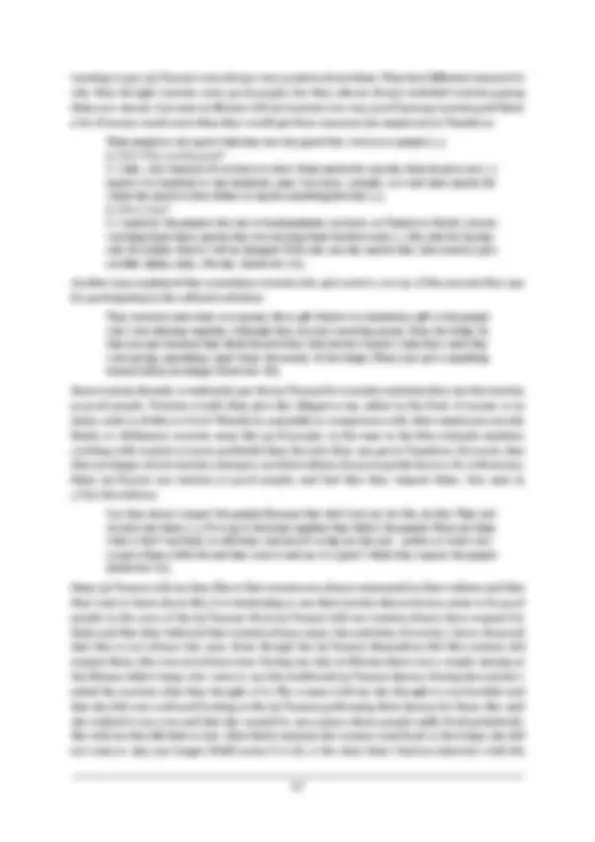
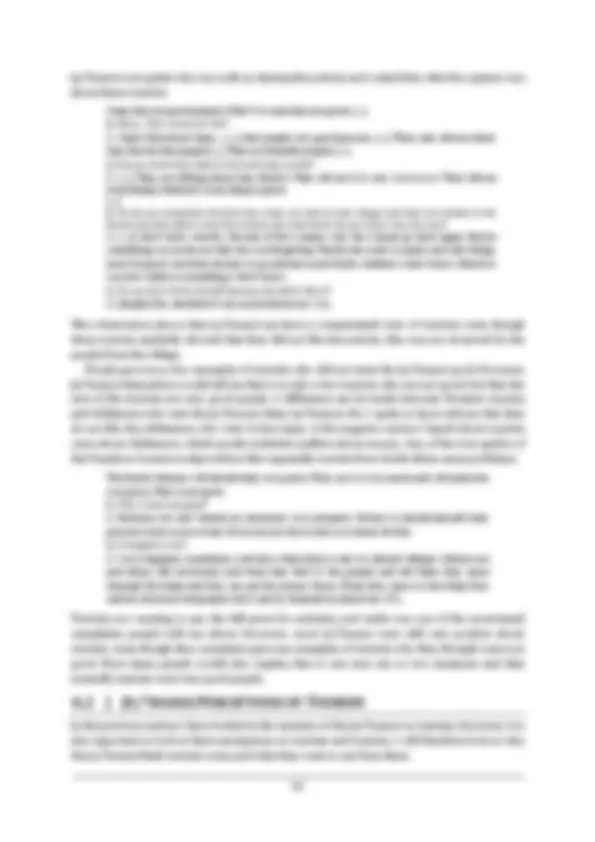
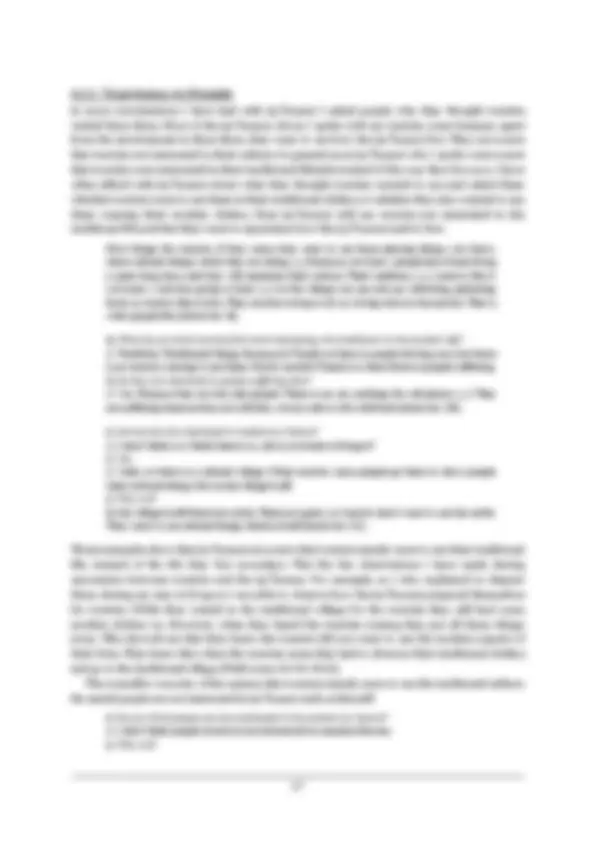
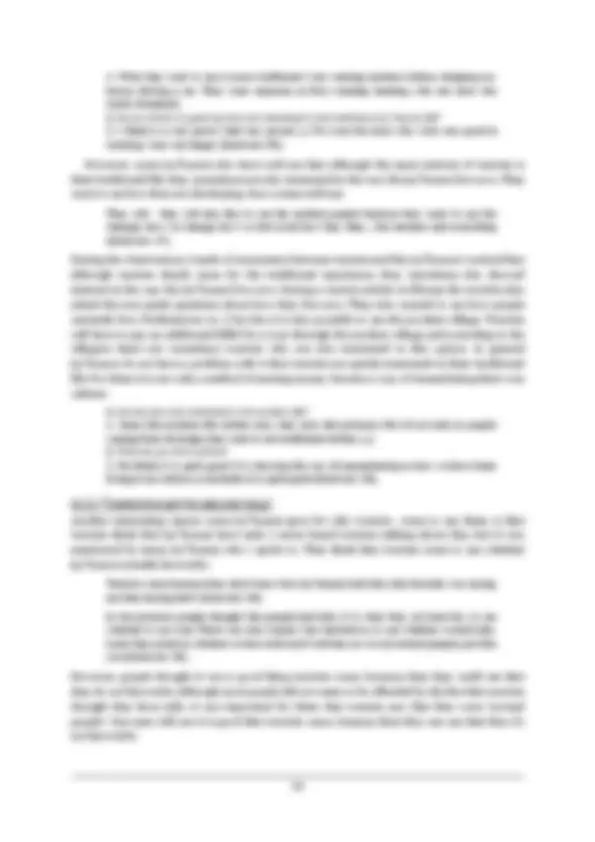
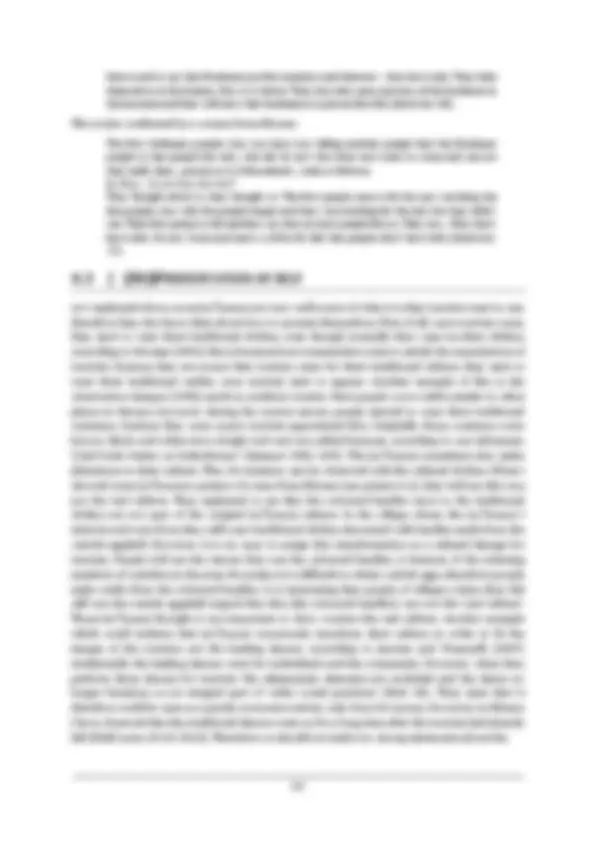
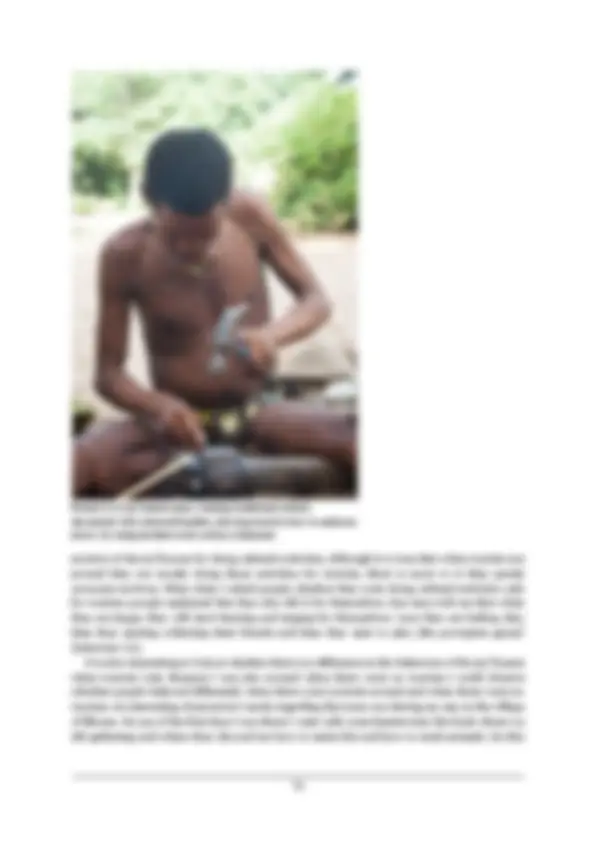
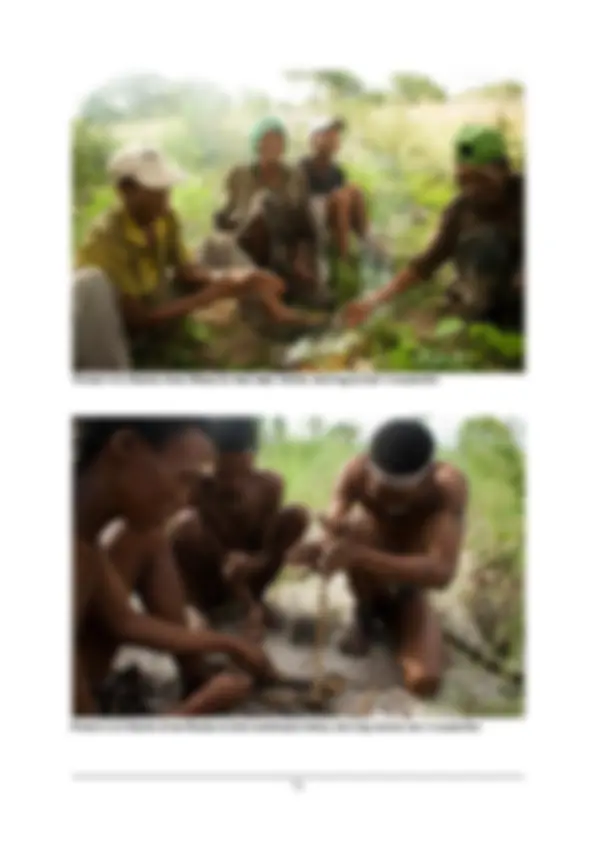
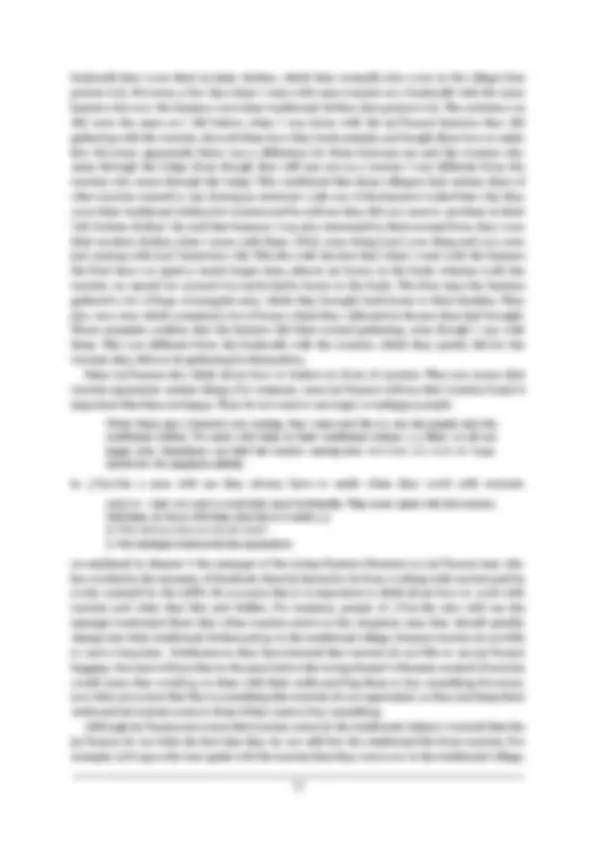
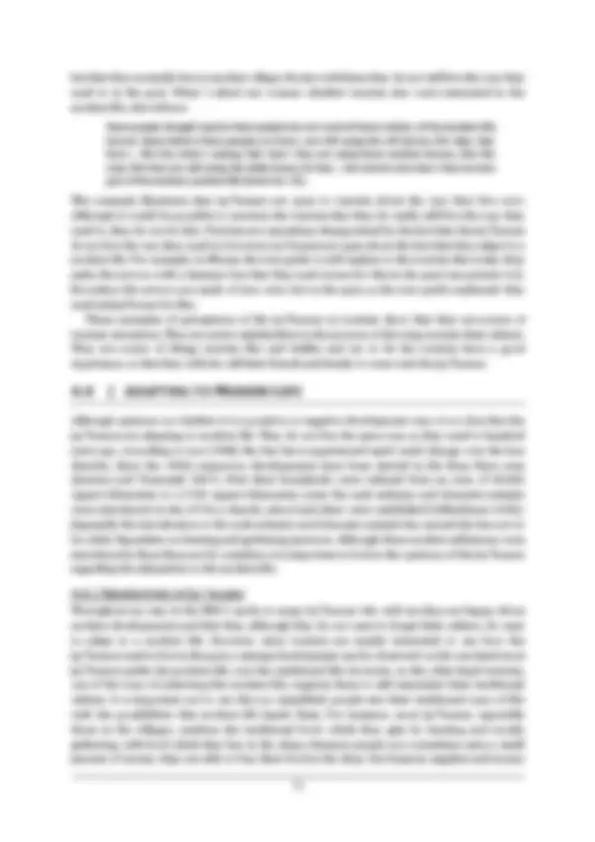
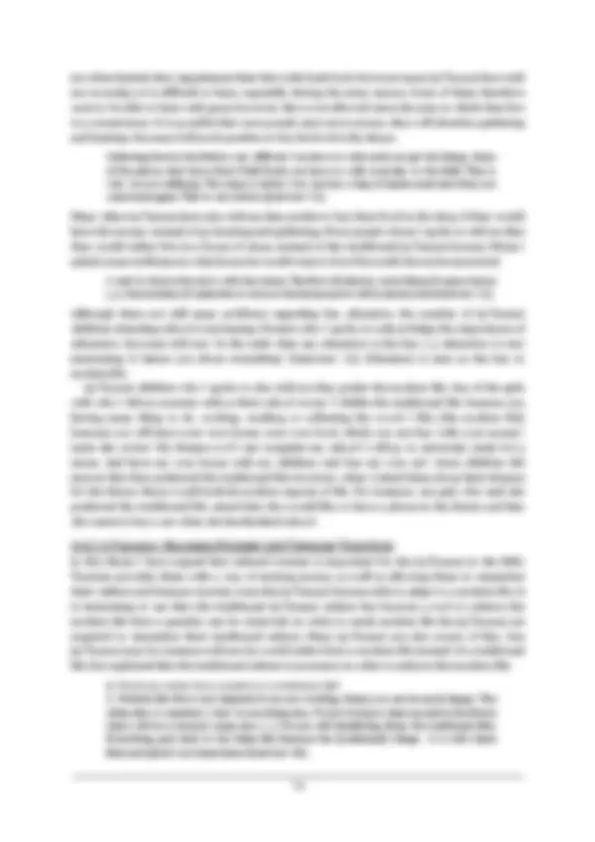
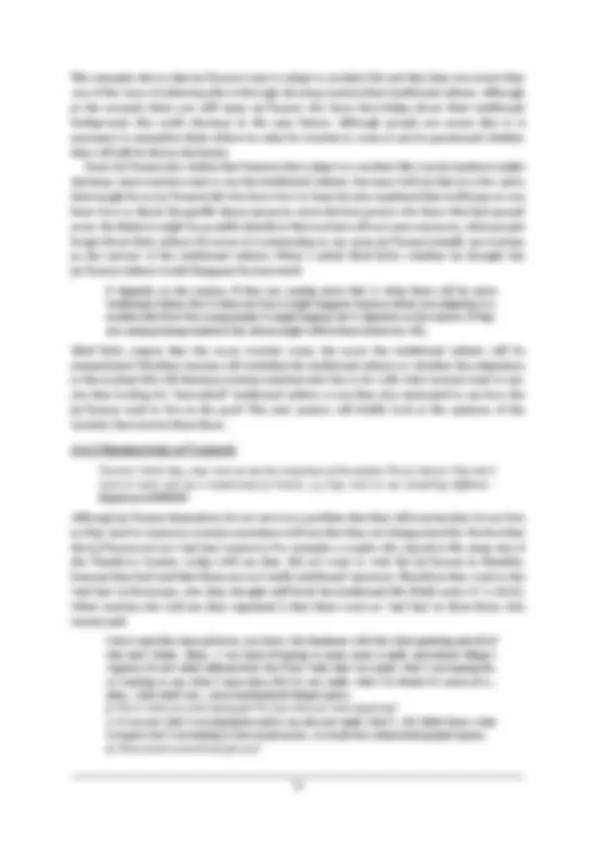

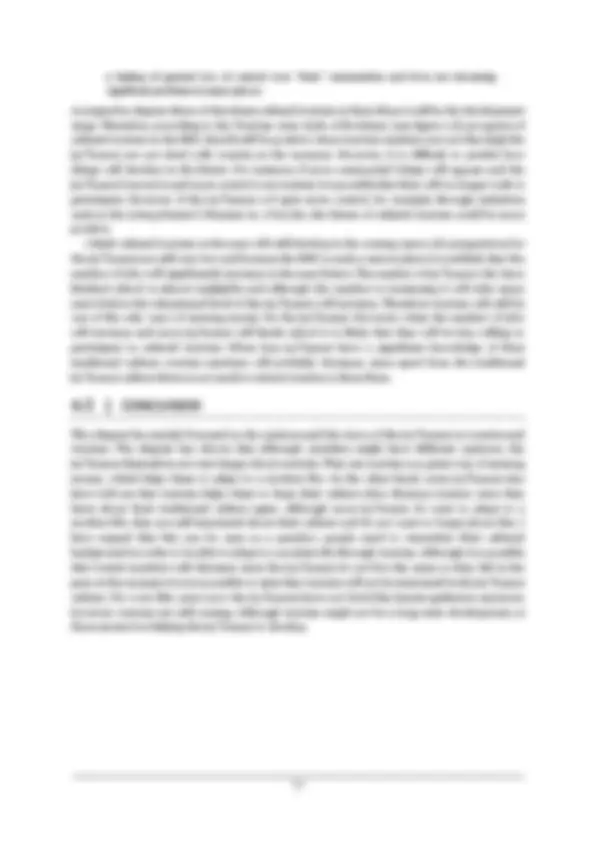
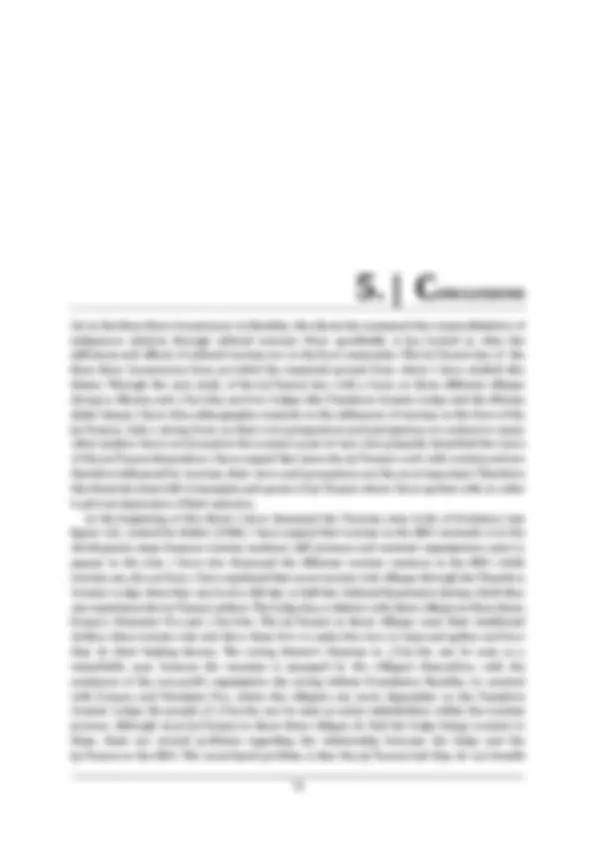
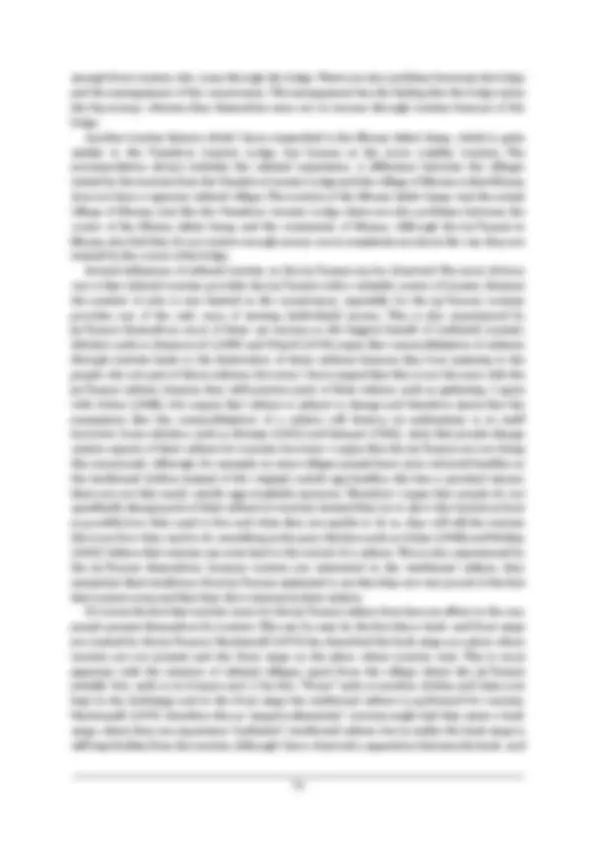
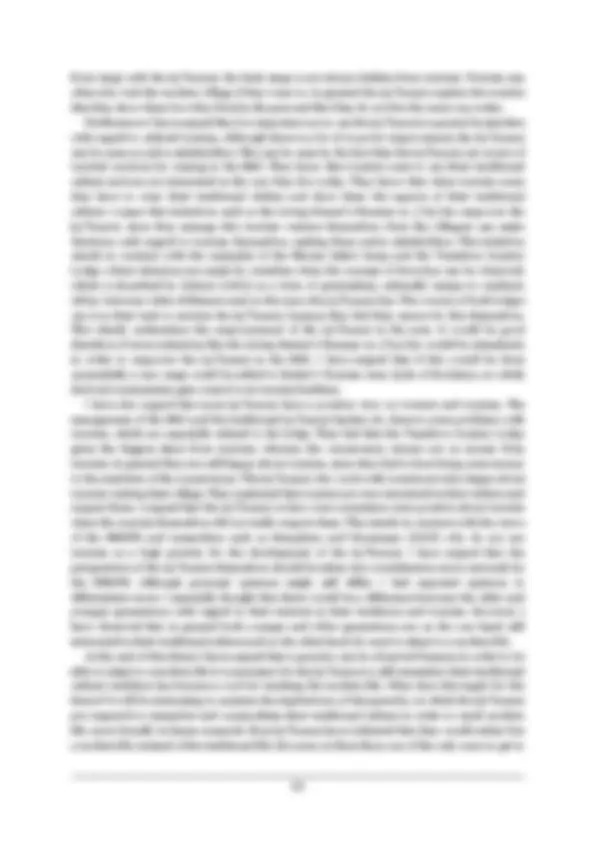
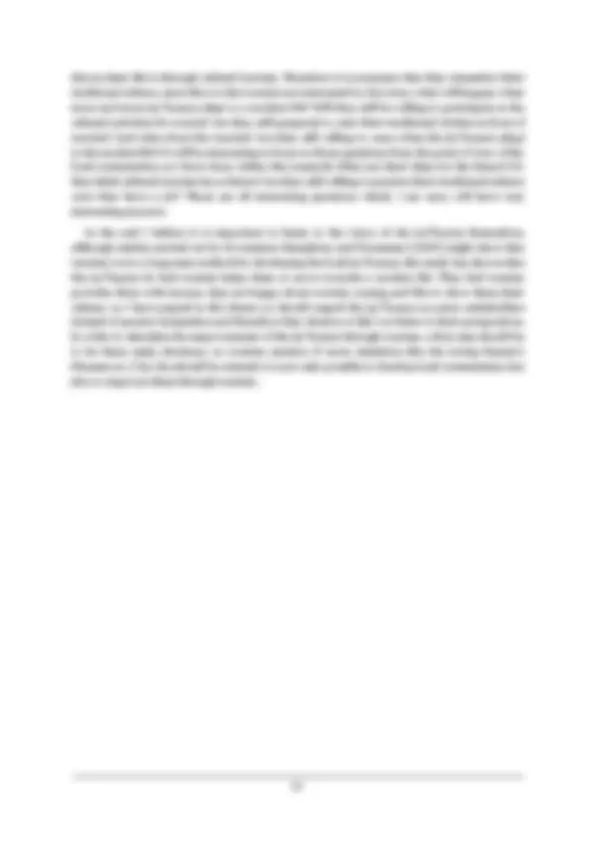
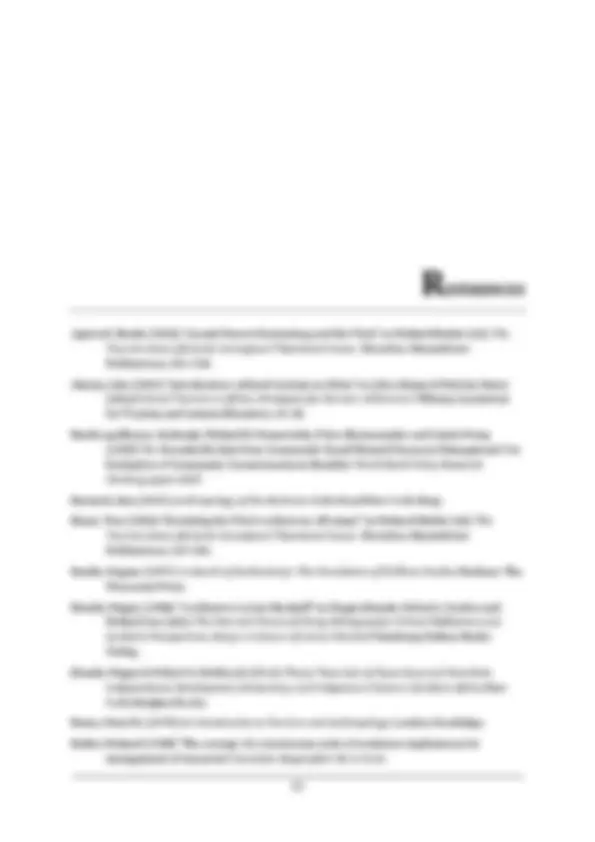
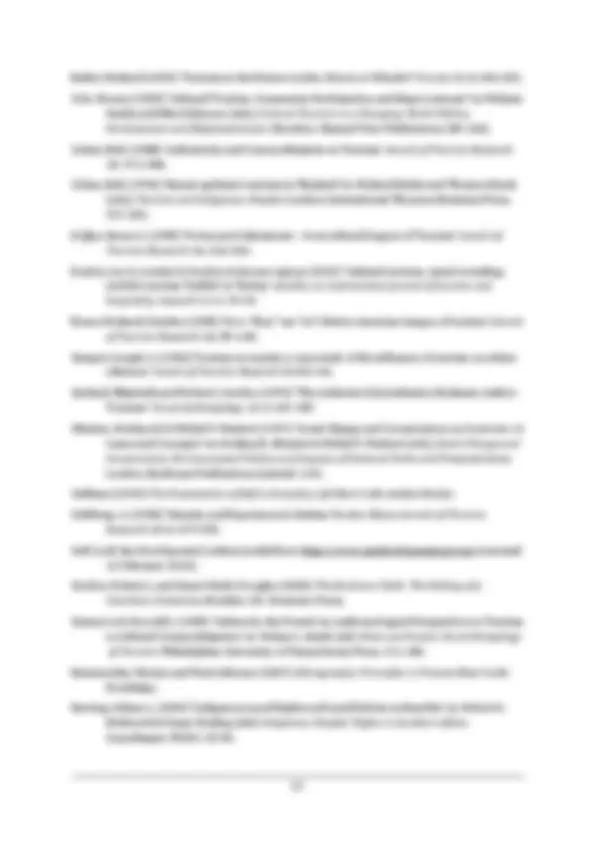
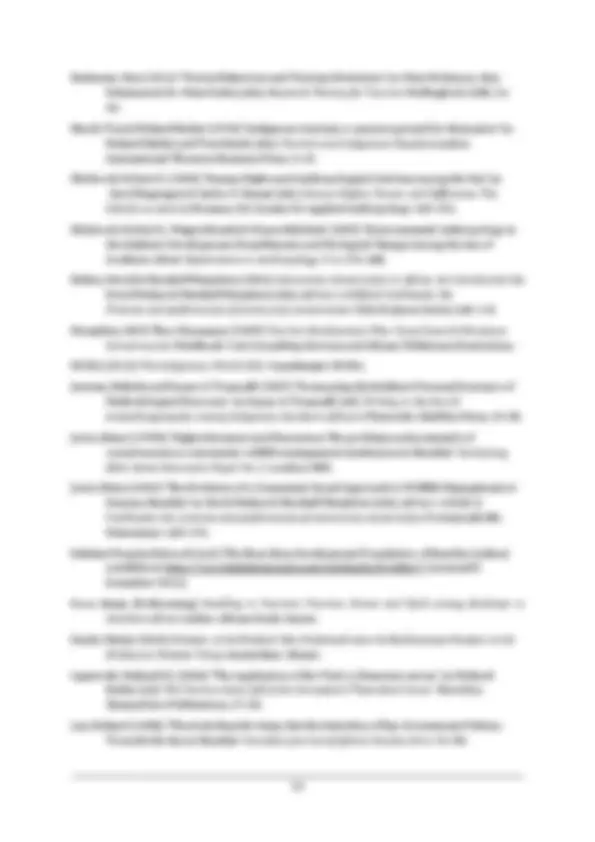
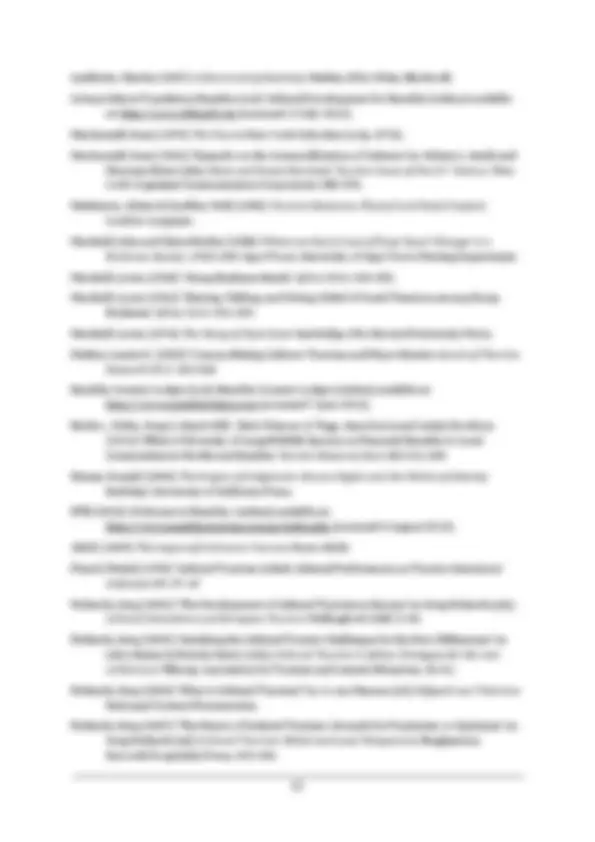
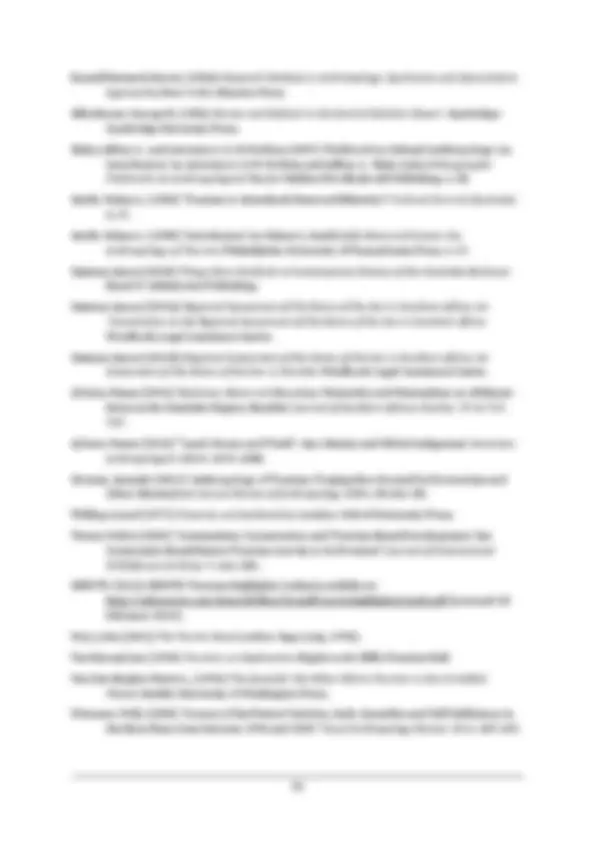

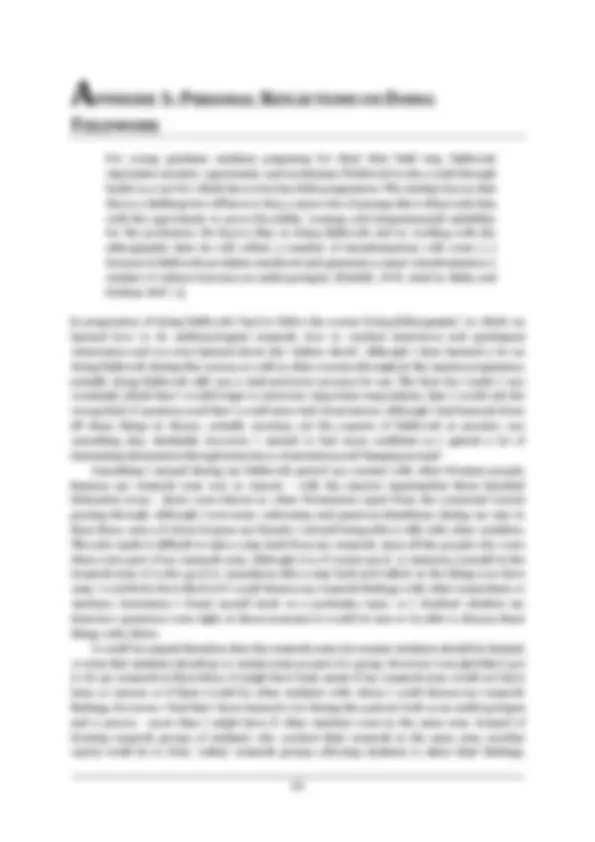
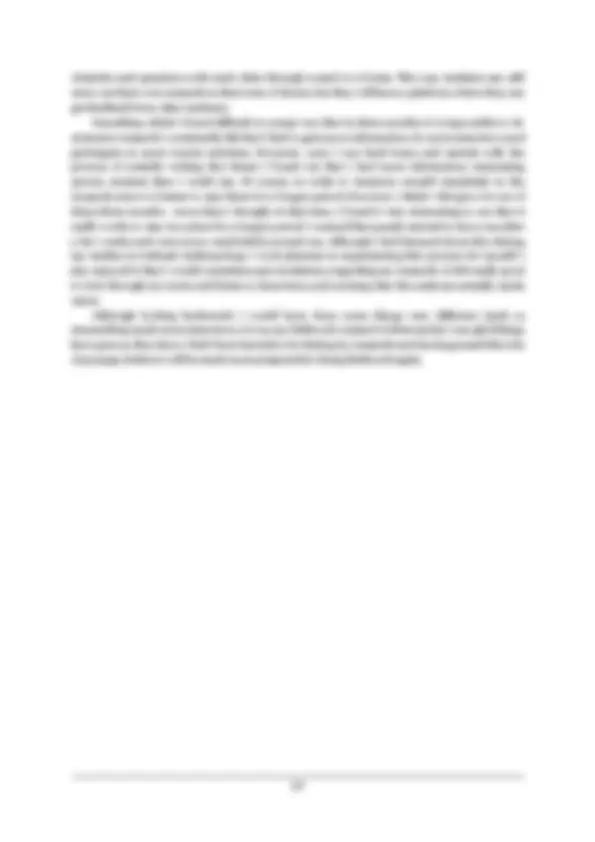

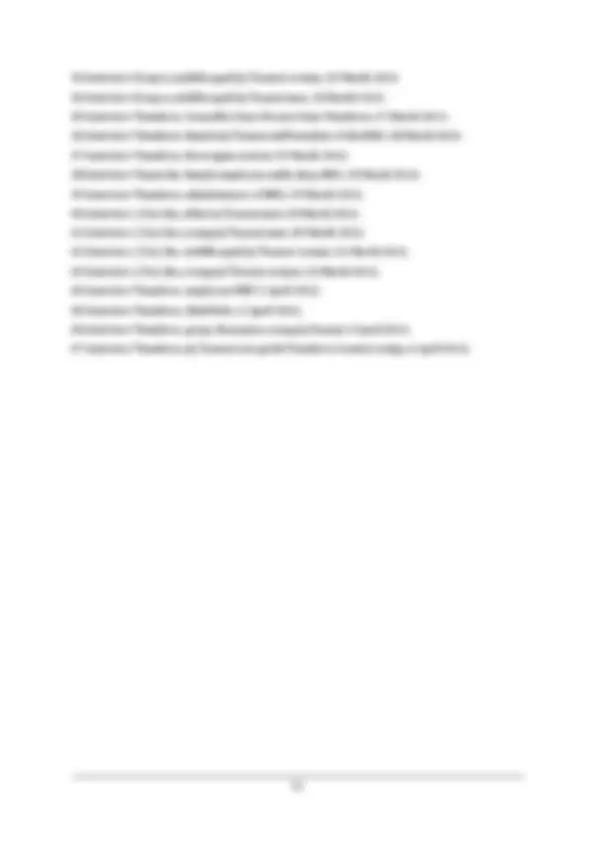
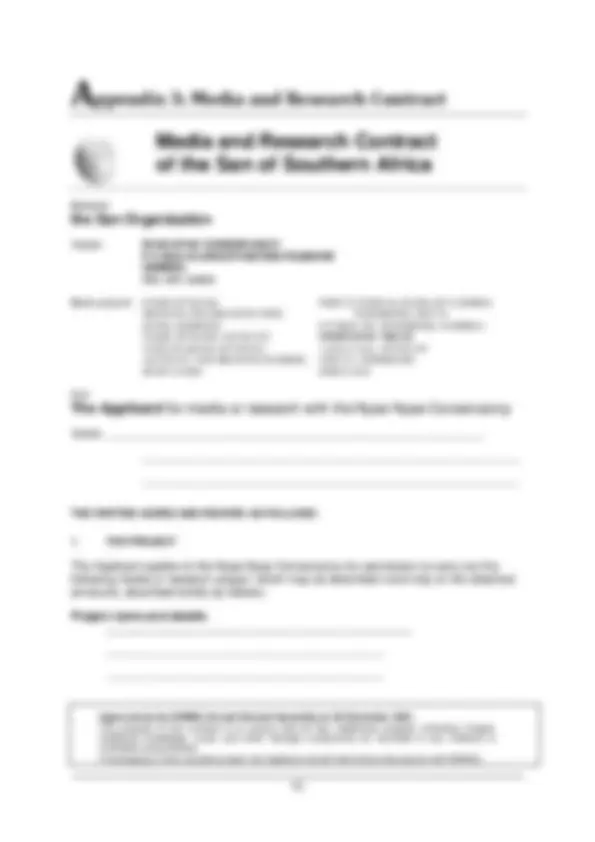
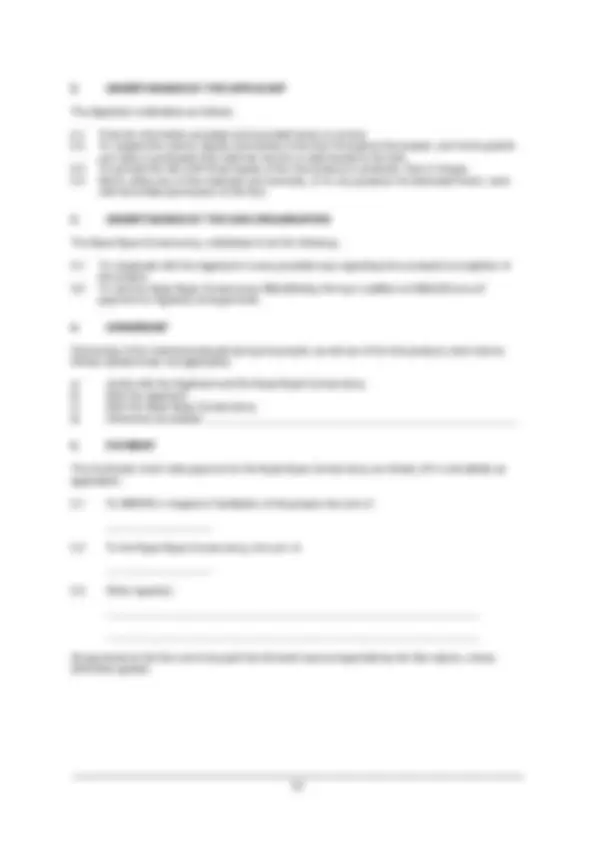



Study with the several resources on Docsity

Earn points by helping other students or get them with a premium plan


Prepare for your exams
Study with the several resources on Docsity

Earn points to download
Earn points by helping other students or get them with a premium plan
Community
Ask the community for help and clear up your study doubts
Discover the best universities in your country according to Docsity users
Free resources
Download our free guides on studying techniques, anxiety management strategies, and thesis advice from Docsity tutors
The dobe ju hoansi in cultural tourism in the nyae nyae conservancy and effect of cultural tourism.
Typology: Study notes
1 / 95

This page cannot be seen from the preview
Don't miss anything!
























































































Cover photo: The image on the left shows three Ju/’hoansi men wearing modern clothes who are busy with gathering food. The image on the right shows the same Ju/’hoansi men, who are now dressed in traditional clothes.
The Ju/’hoansi language includes ‘click’ sounds. In order to pronounce names properly it is necessary to have a basic knowledge of these clicks. There are two basic systems in use of writing clicks. The spelling of names used in this thesis are according to the Khoisan system. This orthography has five basic clicks as can be seen in the figure below. I use this system because it is used in most literature, as well as by the Ju/’hoansi in Nyae Nyae themselves.
Khoisan system Bantu system Bilabial click no symbol Dental click / c Alveolar click ≠ (‘tc’ can be used) Lateral click // x Palatal click! q Figure 0.1: Clicking sounds in the two most common systems (Barnard 2007: 9)
We arrive at the village in a four-wheel drive, together with two local tour guides. When we get out of the car all the villagers approach us. They wear traditional Ju/’hoansi clothes: the men only have a small piece of animal skin in front of their private parts, the women wear a skirt of animal skin and some of them also have some skin wrapped around their shoulders. Their breasts, however, are clearly visible. From the way they greet us they seem very humble people. The village exists of nine traditional houses made of grass, which stand in a circle. One of the tour guides explains that this is not the village where the people actually live: they have created this village so that we can see how they used to live. When we walk towards the houses we see people sitting around the fire and working on crafts. One man is making an arrow and a tour guide explains how they make it poisonous. He tells us the poison comes from the cocoon of a specific kind of beetle. The poison is lethal, also for humans. After the part in the village we go for a bushwalk. There are fourteen Ju/’hoansi coming with us: four older men and four older women, two boys and two girls of around seventeen years old and two younger children. We have to drive a few hundred meters before we can start hunting and gathering and all the Ju/’hoansi get in the back of the car. When we stop they all get out and immediately start to look for plants. The headman clearly is in charge. Every time someone finds a plant or tree he explains us what it is in a loud voice and with a lot of gestures. It is obvious that he enjoys working with tourists a lot; he is a real actor - even without understanding the language it is possible to derive what he means from his gestures. One of the tour guides translates what he says. The headman tells us about a plant that is used for hunting porcupine, one that helps if you are lost and one that cures headaches. After a while we come across an open area in the bush where we stop. Here some women start digging for water root. When they have found one they clean it and scrape the pulp. The headman takes some of it in his hand and squeezes it into his mouth. He does this with a lot of noises and gestures and he is clearly pleased when we laugh at this. The Ju/’hoansi also hand us a piece of the water root to try. Next they show us how to make fire with two wooden sticks and we all cheer when the fire erupts. After this they set up a trap to show us how to catch small birds like the guineafowl. First they make rope out of a plant and attach the rope to some twigs. One of the men pretends to be a bird that is caught in the trap (see picture 1.1). Some of the women pretend to catch it and turn his neck. Again we enjoy the show.
After this the tour is over and tour guides take us back to the village, where we can buy some of the crafts.
Picture 1.1: Ju/’hoansi man showing tourists how a bird trap works
People in the West are often fascinated by indigenous peoples. Every year many tourists travel the globe in search of the “primitive” other, in order to experience how these people live. That Western people are so attracted by indigenous cultures is also seen by the popularity of programmes such as Tribe and Groeten uit de Rimboe , where Western people stay with “primitive savages”. There is something captivating about these people who seem so different from ourselves, and who still seem to be in touch with nature. Although people have been attracted by other cultures for a long time, globalization has made it possible for people to travel all over the world, even to the most remote areas. On the other hand, because of globalization indigenous cultures seem to disappear due to influences from modern, Western civilization. People therefore feel a need to experience “untouched”, “primitive” cultures while they still can. This study looks at the effects of cultural tourism on the host community. A prevailing assumption is that cultural tourism destroys or changes the cultures and traditions of indigenous groups. It is believed that because the culture becomes a commodity, sold either by tourist operators or by the communities themselves, it is no longer an authentic culture. It is important to remember that culture is not a static concept, but is something which is always changing and adapting due to external influences. It is too easy to only look at cultural tourism from a Western perspective and argue that it will lead to the ruin of indigenous cultures. Changes do not necessarily have to be negative: cultural tourism, when managed properly, might also help to develop the local host communities.
Figure 1.1: Namibia (IWGIA 2012: 489)
in the Namib Desert in the west to seven hundred millimetres in the Caprivi northeast of Namibia (Biesele & Hitchcock 2011: 2). Namibia has an estimated population of 2,1 million, making it a sparsely populated country. Apart from mining, agriculture and fishing Namibia is dependent on tourism as a source of income. It is estimated that around 777,890 tourists visit Namibia annually (NTB 2010), generating about $398 million annually (UNWTO 2011). They are attracted by its beautiful and contrasting landscapes and spectacular flora and fauna. Namibia’s eleven ethnic groups, especially the Himba and the San, also attract tourists who want to experience other (indigenous) cultures. Although the government of Namibia is relatively stable compared to other African countries, poverty is still very much present. According to the United Nations Development Program (UNDP) in 2005 thirty-five percent of the Namibian population lived under the poverty line of $1 a day and fifty-six percent lived on $2 a day. A big inequality can be found between people living in Windhoek and people in rural areas. According to Biesele and Hitchcock the wealthiest five percent of the population is in control of seventy-five percent of the GDP, whereas fifty percent of the population only controls three percent of the GDP (2011: 31). Poverty reduction and human development have been a central part of the national agenda since independence in 1990; however, poverty is still a huge problem in Namibia. Another important issue for the government of Namibia is the preservation of its landscapes and flora and fauna. In the 1980s the numbers of wildlife had decreased dramatically in Namibia because of extreme drought and poaching practices due to commercial demands for ivory and the black rhino horn (Jones 2001: 152). In order to limit the decrease of wildlife populations and to counter rural poverty, CBNRM was introduced in the 1990s by the Namibian government, in
cooperation with organizations such as the World Wildlife Fund (WWF) and the United States Agency for International Development (USAID). This programme was copied from the project implemented in Zimbabwe in 1975 which was called Communal Areas Management Program for Indigenous Resources (CAMPFIRE). CBNRM is based on the idea that nature conservation and rural development can and should go hand in hand. In order to stimulate sustainable resource use by the local population, communities are involved in the management of the conservancies, and income which is generated by the conservancies flows back to the local communities. CBNRM is supposed to empower the local communities and give them a sense of ownership over wildlife and natural resources. The idea is that when local communities gain benefits from the conservancy they are more likely to use natural resources in a sustainable way (Jones 2001: 166). CBNRM contrasts sharply with former nature conservation policies, which were based on the idea that ‘wilderness’ and people cannot live together. Wilderness was seen as land which was untouched by humans; however, according to Ghimire and Pimbert this is an urban perception of nature and does not exist in reality: humans have had influence on nature everywhere in the world (1997: 5-6). Until recently it was normal that the local (and often indigenous) population of a national park was to be excluded. They were often removed in very violent ways. The Yellowstone National Park in the United States, established in 1872, is one of the first examples of this. Numerous cases in Africa can also be given where local populations were brutally removed from their habitat. In the 1980s a lot of critique was expressed on conservancy policies and agencies (Hulme & Murphree 2001: 1). According to Ghimire and Pimbert the exclusion of indigenous peoples and peasants can actually lead to a decline of biodiversity:
[b]y excluding local people from protected areas, present mainstream conservation strategies for forests, wetlands, [and other environments] remove the anthropogenic disturbance of ecosystems which may be essential for the generation and conservation of biological diversity’ (1997: 13-14).
The Government of Namibia (GoN) started implementing CBNRM in the 1990s, in the form of ‘conservancies’. The Ministry of Environment and Tourism (MET) developed a policy and legal framework around these units by which local communities gain ownership over wildlife. These conservancies are unfenced, open systems, used for wildlife, tourism and mixed farming. People in the communities of these conservancies become members and can choose a representative committee which implements programmes and develops a constitution (Bandyopadhya et al 2004: 2). Members benefit by gaining a certain authority and control over wildlife resources, being able to work with tourism agencies and making decisions about revenue sources and uses (Ibid). Studies have shown that although there are many challenges, conservancies have positive effects on the biodiversity of the environment and the development of rural areas in Namibia (see Bandyopadhya et al 2004; Jones 2001; Naidoo et al 2011). Over the years wildlife numbers have been increasing again, including the endangered black rhino. Communities themselves earned more than N$11 million (€1,1 million) from community-based conservation and tourism. In many conservancies tourism lies at the heart of the CBNRM project; it forms a large part of the income for conservancies. Local communities are able to make deals with tourism agencies (Bandyopadhya et al 2004: 2). According to Turner (2004) this has to do with the idea that in order to be successful, CBNRM should go through the market. Turner (2004: 16) states this ‘capitalist logic makes it possible to assign values to conservation and to assess its costs and benefits’. Tourism, therefore, is seen as one of the most substantial sources of income for local communities in the conservancies.
Figure 1.2: The Namibian Tsumkwe District in the Otjozondjupa region (Biesele & Hitchcock 2011: 41)
Figure 1.3: Map of the different San groups in southern Africa (WIMSA, 2011)
Country Population Size (sq km) Number of San Angola 13,068,110 1,246,700 3, Botswana 2,029,207 600,370 48, Namibia 2,128,471 825,418 34, South Africa 49,109,107 1,221,912 7, Zambia 12,056,823 752,614 1, Zimbabwe 11,651,85 8 390,580 2, Totals 90,043,776 5,037,594 98, Figure 1.4: Number of San in southern Africa (Biesele and Hitchcock 2011: 4)
SAN/BUSHMEN TERMINOLOGY It is important to explain something about San terminology. This is a very complex issue as it is not just about words, but especially about what the underlying assumptions of these terms are. It is difficult to decide on the best name because the San are not a homogeneous group, but consist of many different (sub)groups. The most used terms are ‘San’ and ‘Bushmen’. Both terms are problematic because they refer to different self-identifying groups. Although they share ‘a distinct and identifiable cultural “deep structure” that most commonly manifests in language, social organisation, economic activity, religion and historical experience’, (Suzman 2001a: 4) there are also many differences between the different groups. Moreover, the terms ‘San’ and ‘Bushmen’ have both been imposed by non-San. ‘Bushmen’ comes from the Dutch word ‘Bosjesman’, which the Dutch settlers in South Africa used to refer to all the hunter-gatherers of southern Africa - independent on people’s ethnic background. In the past anthropologists mostly used this word, but nowadays this term is seen as discriminating because it was used by the colonial powers. It is still a much used term, especially by tourist operators and tourists. Recently most (anthropology) researchers use the term San; however, this term also has negative connotations. San means ‘those who gather wild fruit’ and was used - especially by the Nama - to discriminate against people who did not possess cattle. Although both terms have negative connotations, ‘San’ is considered most neutral. According to Suzman (2001a: 4) the San themselves have not yet agreed on which term they consider best. In Nyae Nyae the Ju/’hoansi mostly refer to themselves as ‘Ju/’hoansi’ or ‘San’ and only occasionally as ‘Bushmen’. Therefore I will use the term ‘San’ in this study. However, wherever possible I will the term Ju/’hoansi.
THE SAN IN NAMIBIA San also is an umbrella term for the different groups in southern Africa who traditionally lived by foraging. The San used to be the sole occupants of much of southern Africa and lived in small groups of five or six families, who depended on hunting and gathering. They developed an extensive knowledge of their local homelands and its natural resources and learned how to exploit these (Suzman 2001b: 5). According to Suzman they also traded with others and sometimes raised livestock; especially the last two thousand years they were dependent on a mixed economy of hunting and gathering, combined with pastoralism (Ibid.). The San had a very egalitarian society and decision making was mostly done by consensus. Around five hundred years ago Bantu-speaking people started to appear in great numbers in the region that is now Namibia. This, in combination with colonialism, caused the San to lose their lands and fall under the rule of others. Especially in the last hundred years - first under the rule of German colonialists (1894-1915) and later the Union of South Africa (1915-1990) - the San lost most of their ancestral land. The German colonists took the territories of the San and offered these to white farmers. Many San living in these areas became labourers on the white
the Ju/’hoansi (Biesele & Hitchcock 2011: 9). An administrative centre, called Tsumkwe, was made in Nyae Nyae, which was meant as a permanent relocation for the Ju/’hoansi in order to incorporate them into “modern life”. By offering food and water the South-West African government tried to encourage the Ju/’hoansi to come to Tsumkwe. Life in Tsumkwe was characterized by poverty, social dissatisfaction, ill health and apathy and Tsumkwe became known as “the place of death” because of extreme mortality rates (Ibid.: 10). In the 1980s the South-West African government wanted to establish a game reserve in the Nyae Nyae area. Ju/’hoansi were only allowed to stay in the reserve when they would dress and behave as “traditional” Ju/’hoansi, for the entertainment of tourists. During the 1980s many Ju/’hoansi left Tsumkwe because of its horrid conditions. With the help of anthropologists Ju/’hoansi were provided with tools, livestock and seeds so that they could work as farmers on their traditional lands (Ibid.: 14). Nowadays the Ju/’hoansi gain benefits from the established conservancy. Income is mainly created by tourism (including trophy hunting). They are also able to sell craftwork to tourists who visit the conservancy. According to Stasja Koot (forthcoming) in the mid-1990s around N$17,400,- was generated by the conservancy by (photographic) safari operations and around N$5000,- was generated through game ranching. In 2002 the Nyae Nyae Conservancy already generated N$956,500,- (€95,000,-), making it one of the most profitable conservancies in Namibia.
THE NYAE NYAE CONSERVANCY AND THE NYAE NYAE DEVELOPMENT FOUNDATION OF NAMIBIA (NNDFN) The NNC is represented by the Rada, a spokesperson of the village; each village has two Rada’s who meet at the Annual General Meeting (AGM), where important decisions for the conservancy are made. The NNC is divided in four districts: North, South, West, and Central. Each of these districts have three representatives who together form the board of the NNC, who meet four times a year. The board also chooses the members of the management committee. This committee runs the conservancy on a daily basis and consists of a manager, an administrator and five members. During my stay in the conservancy there was no manager. An employee of the NNDFN told me it is difficult to find a suitable person for this job:
I mean we’re ever struggling with the organizational thing because...staff are there and they leave and then you’re going start training again and then a new manager and then a new chairperson, so...it’s a turnover of staff (Interview 4).
The NNC has several projects that they run in the conservancy, which mainly focus on waterhole protection, village schools and crafts production. The conservancy is supported by the Nyae Nyae Development Foundation of Namibia (NNDFN), a small NGO which tries to empower the Ju/’hoansi of Nyae Nyae. The NNDFN was founded in 1991 as the successor of the Ju/wa Bushman Development Foundation (JBDF). The NNDFN operates mainly from Windhoek, where its office is located. They have one employee based in Tsumkwe who cooperates with the management of the NNC. The JBDF and later the NNDFN are closely related to the conservancy as they have worked with the Ju/’hoansi since
were happy about the presence of the NNDFN, some did complain about the dominance of the NNDFN. An employee of the management of the NNC told me:
Q: Can you also tell me something that is not so good about the [NNDFN]? A: Yeah… Sometimes it is not only good. But sometimes it is things which she decides and then … Q: What do you mean? A: She goes to money, she is strong with money not to be wasted^1. Sometimes we say let’s pay… pay the workers this amount. Then no… she says no. […] Q: Do you feel [the NNDFN] makes the decisions and not [the management]? A: Yes. That is sometimes not good. Q: Do you have another example? A: […] Like someone’s passed away here in Tsumkwe. We have to go and buy a coffin in Omatako or Grootfontein. [The NNDFN] say yes, this money is for the coffin, but we don’t have money for transport. Now how are we going to get the coffin from Grootfontein? There [the NNDFN] say it is expensive and who is going to pay the costs for the car. […] But he is our member, why we cannot help? But she said no (Interview 10).
Another sign of the NNDFN’s dominance I observed was the fact that the NNDFN did not want to focus on tourism as a development tool, whereas most Ju/’hoansi I spoke to, as well as some traditional authorities, wanted the conservancy to focus more on tourism. However, in general most Ju/’hoansi who I have spoken to where happy about the NNDFN.
1.3.1 PROVIDING CONTEXT: THEORY ON TOURISM AND CULTURAL TOURISM While this study focuses mainly on cultural tourism, it is important to place this concept in the framework of tourism in general. Modern tourism is said to have roots in the eighteenth century in Great Britain with the Grand Tour, a traditional trip through Europe which served as an educational ‘ rite de passage’. Whereas in the past people hardly ever travelled without a connection to business, from the eighteenth century people started to travel as part of leisure time. Especially with regard to the social legislation at the end of the nineteenth and the beginning of the twentieth century in many countries and the improvements in transportation have helped to develop and spread tourism across the world (Butler 2009: 347). Today most people will travel somewhere every year without connections to work. Tourism can be seen as a ‘marker of status’: people feel they have to travel and take holidays (Urry 2002: 5). This also becomes clear when we look at the exploding numbers of travellers over the last sixty years: in 1950 there were only twenty-five million international passengers, whereas in 2011 there were already 980 million international travellers (WTO 2011). In many countries tourism nowadays is firmly established as the number one industry and is a huge job creator (OECD 2009: 19). According to Smith (1989: 1-4) this rise in tourism is caused by the increase of leisure time - since World War II work weeks have become shorter and holidays longer - and discretionary income - money that is not needed for personal essentials such as housing, food, healthcare, and clothing, but is spent on other things such as holidays and day trips. It is difficult to give a definition of tourism, because of its complexity and because of different interests concerned with different aspects of tourism (Van Harssel 1994: 3). Still, it is important
(^1) In general I did not correct errors respondents made during interviews in my transcriptions. Only when the meaning of a response would be unclear due to these errors I have corrected these.